10% de réduction avec le code HERITAGE10 | Livraison gratuite en France.


Quelle est la différence entre les disques 33, 45 et 78 tours ?
Publié par Tom D. le 27 sept. 2023
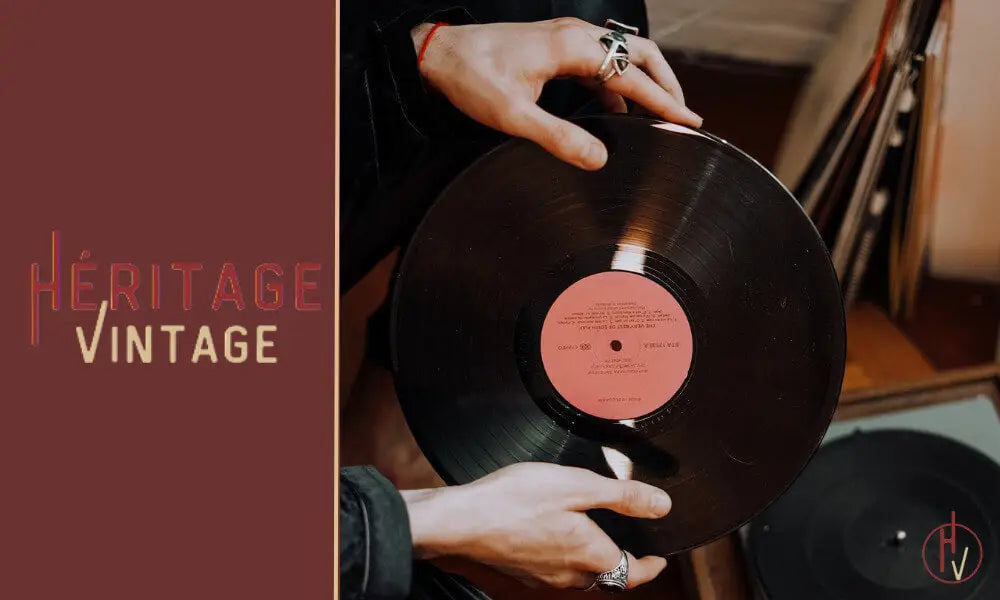
Si vous souhaitez devenir collectionneur de disques en vinyle, vous avez peut-être remarqué que certains disques sont étiquetés 33, 45 ou 78. Mais quelle est la différence ? Et laquelle devriez-vous utiliser ? Voici une explication de la signification de chaque vitesse et du moment où il convient de les utiliser.
En bref, les chiffres font référence à la vitesse de rotation du disque :
- Un disque vinyle 33 tours est joué à 33 tours par minute
- un disque vinyle 45 tours est joué à 45 tours par minute
- un disque vinyle 78 tours est joué à 78 tours par minute
La vitesse de rotation détermine la longueur de chaque face du disque, ce qui influe sur la durée de la musique.
Qu'est ce qu'un disque vinyle ?
Les débuts des disques vinyles.
- Quelle est la différence entre 33 et 45 tours ? - 33 tours/minute - 45 tours/minute
Guide des formats des disques vinyles
- Pourquoi 78 tours ? - Histoire du disque 78 tours - Taille et durée du disque 78 tours - Comment reconnaître un 78 tours ? Conclusion
Commençons par les bases : qu'est-ce qu'un disque vinyle ? Un disque vinyle est un disque en plastique de chlorure de polyvinyle (PVC), avec un sillon en spirale qui va du bord extérieur au centre du disque. Le sillon est utilisé pour enregistrer le son en gravant physiquement sur le vinyle un motif ondulé qui peut être lu par une platine lorsque le disque tourne. Le composant le plus évident d'un disque vinyle est le vinyle lui-même. Les disques vinyles sont fabriqués en PVC, un polymère thermoplastique malléable et facile à mouler. Il existe deux principaux types de vinyle utilisés dans la production de disques : le vinyle vierge et le vinyle recyclé. Le vinyle vierge est fabriqué à partir de nouvelles granules de PVC et est considéré comme le vinyle de meilleure qualité que vous pouvez acheter, tandis que le vinyle recyclé est fabriqué à partir de vieux disques et d'autres sources et peut avoir une qualité sonore inférieure. Lors de la production, le vinyle est pressé en forme de disque plat et les sillons sont découpés à la surface du disque. Les sillons contiennent la musique et sont créés par une machine à découper qui grave les sillons dans le vinyle. Les sillons d'un disque vinyle sont en forme de spirale et partent du bord extérieur du disque pour se diriger vers le centre.
Le sillon est constitué de deux parois, séparées par un petit espace. C'est sur ces parois que la pointe de lecture (l'aiguille) se déplace et qu'elle produit le son. La profondeur et la largeur du sillon déterminent la qualité du son. Les sillons plus profonds et plus larges peuvent contenir plus de musique et produire un son de meilleure qualité, mais ils nécessitent également plus d'espace sur le disque. Par conséquent, les pistes plus longues ou la musique plus forte peuvent nécessiter plusieurs disques vinyles.
Au centre du disque vinyle se trouve l'étiquette, qui contient des informations sur l'album, telles que le nom de l'artiste, la liste des pistes et l'étiquette du disque. L'étiquette est généralement faite de papier ou d'un matériau similaire et est collée sur le vinyle pendant la production. Le dernier élément d'un disque vinyle est la jaquette ou la pochette. Il s'agit de l'enveloppe extérieure qui protège le vinyle et contient les illustrations et des informations supplémentaires sur l'album. Les pochettes de disques peuvent être fabriquées en papier, en carton ou en plastique, et sont disponibles dans une grande variété de tailles et de styles. Le vinyle lui-même, les sillons, l'étiquette et la pochette sont autant de composants qui jouent un rôle important dans l'expérience que procure la possession d'un disque vinyle. Même si la musique numérique est plus pratique, l'attrait intemporel des disques en vinyle captive les auditeurs depuis des décennies.
Le premier disque vinyle LP a été lancé en 1930. Les disques en plastique souple de 30 cm étaient utilisés pour les copies de DJ car ils se transportaient bien et offraient un son de diffusion supérieur, mais ils n'ont pas eu de succès auprès du grand public. La gomme-laque étant devenue plus difficile à obtenir pendant l'effort de guerre, les maisons de disques ont commencé à l'abandonner. En 1948, Columbia Records a commencé à vendre des disques longue durée en chlorure de polyvinyle (PVC), ou LP, dont la surface était plus silencieuse, qui stockaient plus de musique et qui étaient beaucoup moins fragiles que les disques en gomme-laque.
Suivant la tradition de rivalité et de secret, les grandes maisons de disques ont introduit leurs propres formules de PVC lourd et de styrène avec différentes finitions. MGM avait Metrolite, Mercury Records - Merco Plastic, Decca Records - Deccalite et Regent - Sav-O-Flex. Tous affichaient la mention "Incassable dans des conditions normales d'utilisation".
Le PVC reste populaire aujourd'hui, la structure cristalline signifie qu'il est suffisamment solide pour supporter un sillon et résister à l'aiguille sans dommage.
De nos jours, les compositions optimisées pour les disques épais et lourds avec des sillons profonds sont préférées car elles donnent un son de meilleure qualité pour votre tourne disque . Avec les progrès réalisés dans la composition des plastiques depuis l'apogée du vinyle, nous sommes certains que le meilleur reste à venir.
Quelle est la différence entre 33 et 45 tours ?
33 tours/minute.
Les disques 33 tours sont également connus sous le nom de disques à longue durée de lecture (LP) . Ils sont généralement utilisés pour les morceaux de musique plus longs, comme les albums, car ils peuvent contenir environ 20 minutes de musique par face. Les microsillons sont le type de disque vinyle le plus courant et peuvent être lus sur n'importe quelle platine. Les 33 tours sont joués à une vitesse plus lente et ont un son plus profond que les 45 tours. Ils sont généralement utilisés pour la musique classique, le jazz et d'autres genres qui ne nécessitent pas beaucoup d'action rapide.
45 TOURS/MINUTE
Les disques 45 tours sont généralement utilisés pour les singles ou les EP, car ils ne peuvent contenir que cinq à sept minutes de musique. Les 45 tours sont plus petits et joués à une vitesse plus rapide que les 33 tours, ce qui leur confère une hauteur de ton plus élevée et un son plus énergique, comme le rock ou la musique pop. Les 45 tours sont souvent fabriqués avec des vinyles de meilleure qualité, ce qui leur confère une meilleure sonorité que les 33 tours.
Il existe une large gamme de formats de disques vinyles. Les formats les plus courants des disques vinyles sont les suivants :
- Les disques 33 tours ou disque LP (Long Play) possède un diamètre de 30 cm (12 pouces)
- Les disques 45 tours ou EP (Extended Play) ont un diamètre de 17,78 cm (7 pouces)
- Disque souple : Disque fin et flexible souvent offert avec les magazines.
- Vinyle coloré : Peut avoir n'importe quelle taille, mais on le trouve le plus souvent sous forme de disque microsillon.
Outre les disques de 33 et 45 tours ordinaires, vous aurez peut-être la chance de trouver des formats plus anciens ou des sorties inhabituelles.
Pourquoi 78 tours ?
Histoire du disque 78 tours.
Les disques 78 tours sont le plus ancien type de disque vinyle . En 1890, Emile Berliner a créé un gramophone capable d'enregistrer et de lire de la musique sur des disques plats. Ces disques étaient la nouvelle génération des disques cylindriques que Thomas Edison avait utilisés pour enregistrer sa voix. Au début, la taille et la vitesse des disques étaient assez variables. En 1910, la vitesse de 78 tours/minute a commencé à être considérée comme la vitesse standard pour les disques phonographiques. Ils constituaient la norme avant l'introduction des 33 et 45 tours.

Taille et durée du disque 78 tours
Les 78 tours étant généralement des disques de 25 à 30 cm (10 à 12 pouces), ils ne permettaient d'enregistrer que 3 à 5 minutes de musique par face. Cela limitait le nombre de chansons pouvant être enregistrées par face à une ou deux.
Comment reconnaître un 78 tours ?
Les 78 tours sont beaucoup plus grands et plus rares , et ne sont généralement utilisés que par les collectionneurs. Les 78 tours sont joués à une vitesse très lente, ce qui leur confère tout de même un son profond et moelleux.
En général, ils peuvent être lus sur n'importe quelle tourne disque vinyle , mais la qualité du son n'est pas aussi bonne que celle des 33 ou 45 tours. Si vous avez un vieux tourne-disque qui ne peut pas supporter les vitesses modernes, vous devrez utiliser un 78 tours.
En résumé, les 33 tours sont plus grands et se jouent à une vitesse plus lente, les 45 tours sont plus petits et se jouent à une vitesse plus rapide, et les 78 tours sont le type de disque vinyle le plus ancien. Ils sont tous utilisés pour différents types de musique. Si vous débutez, les disques 33 tours sont la solution. Ils sont les plus courants et fonctionnent avec n'importe quelle platine. Si vous recherchez une meilleure qualité sonore, les disques 45 tours sont un bon choix. Mais si vous êtes un collectionneur de vinyles, les disques 78 tours sont à privilégier. Ils sont plus rares et offrent une expérience d'écoute unique. Il est essentiel de connaître la vitesse à laquelle votre disque doit être joué, afin d'éviter de l'endommager et de le rendre injouable.
Je vous remercie d'avoir lu cet article ! J'espère que les informations contenues dans cet article ont répondu à vos questions. Vous pouvez montrer votre appréciation pour les efforts de notre équipe en visitant notre magasin d'appareils audio vintage en ligne. Pour être tenu au courant de nos dernières offres, vous pouvez ajouter notre boutique à vos favoris ou vous inscrire à notre newsletter. Merci et à bientôt !
Article suivant →
Tourne Disque
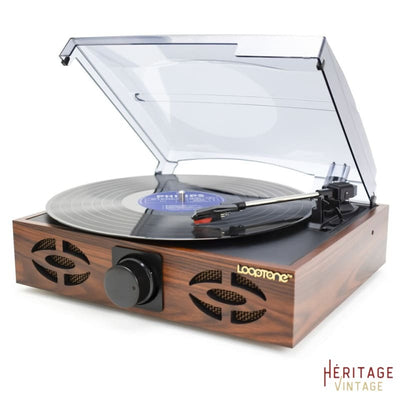
Tourne Disque en Bois

Tourne Disque Enceinte Bluetooth
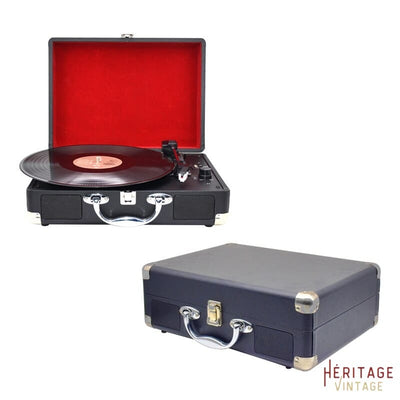
Tourne Disque Valise Année 60
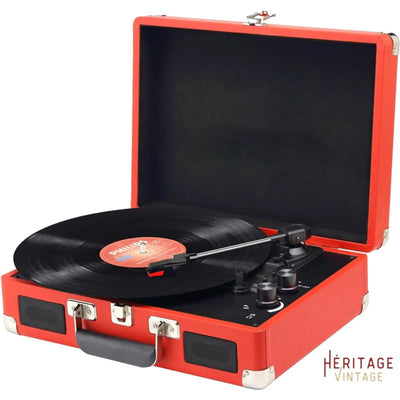
Tourne Disque Ancien Valise

- Tourne Disque Vintage
- Tourne Disque Vinyles
- Gramophone Ancien
- Porte Disque Vinyle
- Meuble Tourne Disque
- EUR USD CAD AUD GBP JPY
Votre panier est vide
- €0,00 Sous-total
Je suis d'accord avec les Conditions
- Tourne disque
- Rangement Vinyle
Time to get excited about our new collection for Men!
Meet our lovely team!
qu'est-ce qui différencie les disques 78 tours des disques 33 et 45 tours ?
mars 26, 2022
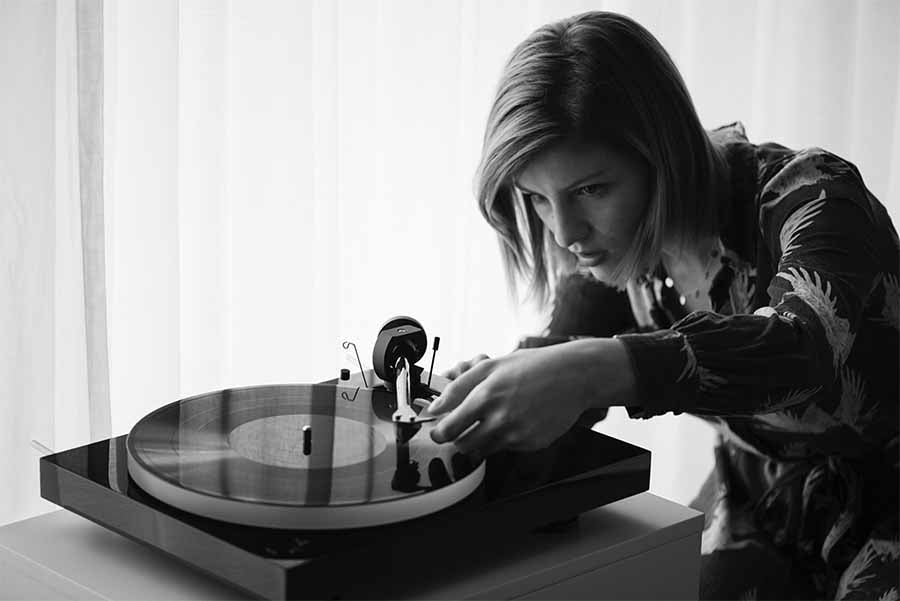
En quoi les disques 78 tours sont-ils différents des 33 tours et des 45 tours ?
En tant que collectionneurs de disques, nous savons que les disques 78 tours sont différents des autres. Tout au long de l'histoire, il n'y a eu que des 78 tours, c'est-à-dire des disques 78 RPM, mais aujourd'hui nous voyons plus souvent des 33 tours et des 45 tours. RPM signifie rotation par minute et indique la vitesse de rotation du disque. Les 78 tours sont les disques originaux, mais qu'est-ce qui les différencie des disques vinyles de 33 ou 45 tours/minute ? Examinons de plus près l'histoire de ces disques et la manière dont ils ont été utilisés pour créer la plupart des enregistrements sonores.
L'origine des disques vinyle
En 1890, Emile Berliner crée un gramophone capable d'enregistrer et de lire de la musique sur des disques plats. Ces disques étaient la nouvelle génération des disques cylindriques que Thomas Edison avait utilisés pour enregistrer sa voix. Au début, la taille et la vitesse des disques étaient très variables. En 1910, le 78 tours/minute a commencé à être considéré comme la vitesse standard pour les disques phonographiques. Comme les 78 tours étaient généralement des disques de 10 à 12 pouces, ils ne pouvaient enregistrer qu'environ trois à cinq minutes de musique par face. Cela limitait à une ou deux le nombre de chansons qui pouvaient être enregistrées par face. Ces premiers disques étaient fabriqués en gomme-laque. Ce matériau est créé à partir d'une résine naturelle. La résine est combinée à de l'alcool, qui la dissout, et est reformée en gomme-laque. Ce nouveau matériau peut être facilement rayé, ce qui signifie que la découpe des rainures pour créer de la musique était simple, la gomme-laque résiste également à l'humidité, de sorte que ce nouveau type de disque est facile à stocker. Le matériau était également plus lourd, avec une forte teneur en minéraux qui produisaient un bruit de surface lorsque les stylets jouaient le disque. Ces disques étaient également plus rigides et pouvait se casser en cas de chute. Les disques vinyle LP (long-playing) sont apparus en 1948. Également connus sous le nom de 33 tours, ils pouvaient contenir environ 60 minutes de musique, ce qui signifie que l'on pouvait écouter un album entier sans changer de disque. Ces disques étaient également les premiers à avoir des microsillons, c'est-à-dire des sillons quatre fois plus petits que ceux des 78 tours. Les 45 tours ont ensuite été inventés pour s'insérer dans les juke-boxes car ils prennent moins de place et contiennent plus de musique que les 78 tours. Même si la bande magnétique a été inventée dans les années 60, il a fallu près de 20 ans pour qu'elle rattrape et dépasse la vente de disques. Les disques vinyles étaient souvent le choix des consommateurs, qu'ils écoutent de la musique moderne ou classique.
Lecture des disques vinyle 78 tours

Toutes les platines ne sont pas capables de lire des disques 78 tours car la platine doit être capable de tourner à la vitesse appropriée pour produire 78 tours par minute. Il existe des tourne-disques spécialement conçus pour lire les 78 tours si c'est le seul type de disque de votre collection. Aujourd'hui, la plupart des tourne-disques ne sont plus réglés sur une vitesse de rotation spécifique, mais comme les 78 tours ne sont plus produits, il peut être difficile de lire des 78 tours sur ce type de platine. Vous devrez vous munir d'un kit d'adaptation 78 tours qui vous permettra d'intervertir les poulies du tourne-disque. Une autre question dont vous devez vous préoccuper lorsque vous jouez un disque 78 tours est le stylet que vous utilisez. Comme ces disques ont été conçus pour être lus sur des gramophones, les sillons des disques sont beaucoup plus larges et nécessitent donc une aiguille plus grande pour lire la musique, si vous cherchez un tourne-disque capable de lire les 78 tours, les 33 tours et les 45 tours, choisissez-en un avec une cartouche et un stylet remplaçable.
Avantages des disques 78 tours
- La gomme-laque empêche les disques de se déformer.
- Ces disques sont fabriqués avec un matériau pratiquement inrayable.
- La musique n'est pas altérée par rapport à l'enregistrement original.
- Il est facile de couper la gomme-laque pour enregistrer la musique.
- Ces disques résistent à l'humidité.
Inconvénients des disques 78 tours
- La qualité sonore de ces disques n'est pas optimale, de sorte que des bruits parasites et des clics se font entendre dans l'enregistrement.
- Les disques recueillent facilement la poussière dans les larges sillons.
- Avec seulement quelques minutes de musique par face, la plupart des disques 78 tours étaient limités à des singles.
- Les disques étaient fragiles et se brisaient en cas de chute.
Performances des disques en gomme-laque par rapport aux disques en vinyle
La taille est la différence la plus notable dans les performances des disques 78 tours en gomme-laque et des disques vinyles 33 ou 45 tours. Les 45 tours font généralement 7 pouces, mais les 78 et 33 tours peuvent faire 10 ou 12 pouces.
Quelles sont les différences dont vous devez tenir compte lorsque vous décidez quel disque vous voulez faire jouer sur votre platine ?
- Les 78 tours peuvent contenir environ cinq minutes de musique, tandis que les 33 tours peuvent contenir jusqu'à environ 20 minutes.
- Les disques 78 tours ont une vitesse de rotation plus élevée que les disques 33 et 45 tours.
- Les 78 tours ont des sillons plus larges que les disques vinyles, ce qui signifie que le stylet doit également être plus large.
- Les disques 78 tours sont mono et ne sont entendus que par un seul canal.
- Les maisons de disques ne fabriquent plus de 78 tours.
Si vous connaissez le fonctionnement du vinyle, vous comprendrez que les enregistrements électriques sur 78 tours sont devenus de plus en plus difficiles à gérer. À mesure que les maisons de disques enregistraient de la musique plus populaire, les disques en vinyle sont devenus plus économiques parce qu'ils contiennent plus de musique par face. De plus, une pénurie de gomme-laque pendant la Seconde Guerre mondiale a accéléré la fin de l'ère des disques 78 tours. Même si les 78 tours ne sont plus fabriqués, il y a encore des collectionneurs qui recherchent ce type de disques. Les albums classiques contenant la musique d'artistes tels que Larry Clinton and His Orchestra, Elvis et Chuck Berry sont souvent recherchés. Depuis l'arrêt de la production de ces 78 tours, il existe de nombreux disques en édition limitée que les gens recherchent, même l'engouement pour les Victrola au XXIe siècle n'a pas pu entamer la détermination des collectionneurs qui essaient de trouver des 78 tours à ajouter à leur collection.
Le retour en force des disques vinyle
De nombreux audiophiles affirment que la qualité audio de ces disques vintage est meilleure que celle de l'audio numérique. Aussi imparfaits soient-ils, les disques ont commencé à devenir plus populaires lors de la résurgence du vinyle en 2008. Depuis lors, les ventes n'ont cessé de croître et, en 2020, l'industrie de la musique a vu les ventes de disques atteindre 27,5 millions.
It's Almost Record Store Day! Save 10% Sitewide Code RSD10

Difference Between 33, 45, and 78 Records?
Records, vinyl, LPs. These are all words that describe the same thing. But this wasn’t always the case. LPs, for example, didn’t enter the lexicon until 1948. And before vinyl, there were only shellac records. Now, as record sales are skyrocketing , the age-old questions are resurfacing. One, in particular, has to do with three numbers: 33, 45, and 78.
These numbers refer to the rate at which the record spins on the record player, measured in revolutions per minute (rpm). Most high-quality lp players & record players will come equipped to turn at these three standard speeds. But the question remains: What is the difference between these speeds? And why were they chosen in the first place? To answer these questions, we’ll have to take a little dive into history.
A Brief Record History
To give you an idea of how each of these records came into being, here’s a timeline of the major events.
- 1877 – Thomas Edison modeled the first phonograph and recorded his voice.
- 1878 – Music is recorded onto a cylindrical record for the first time.
- 1887 – Emile Berliner developed a method to record onto a flat disc.
- 1901 – 10-inch 78rpm disc record is made from shellac.
- 1910 – 78rpm becomes the standardized speed for all records.
- 1925 – Electrical recording takes over acoustic recording.
- 1948 – 33rpm LPs are released by Columbia Records made of vinyl.
- 1949 – 45rpm records released. Consumers now have three standard speed options.
- 1963 – Cassette tapes are introduced into markets.
- 1979 – Walkman is created by Sony.
- 1984 – Cassette tapes surpass vinyl records in sales.
- 2008 – The vinyl revolution begins as record sales increase.
The Phonograph and The Gramophone
Records were the second generation of voice recording technology. Their precursor was the phonograph, invented by Thomas Edison in 1877. With his first model ready to launch, he recorded himself, saying, “Mary had a little lamb.” Thus, these were the first words ever recorded on the phonograph.
The cylinder used to record this at the time was large and inefficient. About ten years later in 1887, Emile Berliner improved upon the technology by creating recordings on flat discs, using his patented gramophone. These discs were initially made of glass and were later switched to zinc and eventually plastic.
Shellac: The Natural Plastic
Around the turn of the century, record companies (or soon-to-be record companies) were trying to design the perfect material to produce these new sound recordings on. Plastic wouldn’t be invented for another seven years, in 1907, and scientists were getting creative.
Enter, the female lac bug. Lac bugs, or kerria lacca , are scaly bugs that secrete lac onto trees. This resin can be scraped off, dissolved in alcohol, and reformed into liquid shellac. Shellac is easier to scratch than metal, and it resists moisture, making it an ideal candidate for music records. Although, there’s one downside to shellac. [ Insert crashing sound! ] They’re easily breakable.
Despite this one fatal flaw, shellac was the main material source until vinyl came around in the 1940s. A lot happened over that time period, and it all began in 1901 with the first ten-inch shellac record, spun at 78 revolutions per minute.
The Magic Number
78rpm records quickly popularized and became the “standard rate” by 1910. This is due to the modern engines at the time that would create these discs. A 3600rpm motor running with a standard 46-tooth gear, do the math and you get roughly 78 revolutions per minute.
The length of each record was barely able to fit an entire song, and some songs had to be finished by flipping the record to the other side.
- 10-inch records = 3 minutes per side
- 12-inch records = 5 minutes per side
- 21-inch* records = 8 minutes per side
(*Most records were 10- or 12- inch; rarely would you find the larger 14-, 16-, and 21-inch records.)
Reign of Fifty Years
For almost fifty years, 78s were the go-to record speed. Back then, people didn’t call them 78 records; they just called them records. It wasn’t until Columbia Records released a 12-inch 33rpm vinyl LP (or Long Play) in 1948 that there was another option. These new records could hold a mind-boggling twenty minutes per side. Whaaat!
During this time, new materials developed, and recording processes advanced. Some notable progressions were:
- Electric Recording in 1925 – Acoustic recording was a slow process where singers or musicians would play into a large horn. The reverberations would vibrate a stylus and create one shellac record at a time. In 1925, electric recordings became possible. Musicians could now record music onto a microphone that could then mass produce records.
- Record Material – Mixtures of shellac and vinyl started to be introduced as early as the 1930s, but early results were met with mixed feelings. Companies were forced to table these ideas due to the Depression. Around this time, some record manufacturers tried placing cardboard material between two layers of shellac to make the records more durable.
Suddenly in 1948, the public was hit with records that contained full-length albums. Entire rock concerts jammed into two sides of a vinyl record. With tighter grooves and a slower spin rate, the 33rpm records left the 78s in the dust. In just ten years, 78s plummeted to only 2% of music sales. And in 1959, the last US-made 78 record was produced.
Not all sales went directly over to 33s, however. Although many did, there wasn’t always a need to use up all 40 minutes of an LP. Jukeboxes, for example, still preferred 78s due to their single-song use. This sparked the creation of a new record only a year after Columbia released 33s.
Introduction of 45rpm
In March of 1949, just ten months later, RCA Victor released the new 45rpm record. These 7-inch records could hold about 4-5 minutes of recording on each side, perfect for a single song. With a higher quality than 78s, these records quickly took over the market, outselling even the 33rpm LPs.
At this point, consumers had three choices of speeds. And even they (much like people today) were wondering, what's the difference between 33, 45, and 78 records?
Reign of Thirty-Five Years
From 1949 to around 1984, vinyl records (be they 33 LPs or 45 singles) were the dominant music choice by consumers. Even as new magnetic tape was invented in the ‘60s, it still took almost twenty years before cassette tapes started making a dent on the consumer market. During this time, more surges in technology came about.
- Record Players Improved – Every year, companies would boast about how their record player was one of the fastest record changers in history. Thus, this sparked the war of speeds, fueling innovation in record player technology.
- LaserDisc – LDs were invented in 1978 with grooves so tiny, they had to be read by lasers. These discs could not only record music, but they could record video as well. Due to its initial high costs, these LDs wouldn’t catch on until much later.
There was one other invention in 1979 that struck at the heart of vinyl records.
The Sony Walkman
If you’re on the younger side, you may not remember these revolutionary audio devices. These were the iPods before Apple existed. With the Walkman, you could throw in a cassette tape, put on your headphones, and take your music anywhere—an activity we take for granted nowadays.
The Walkman revolutionized the way people thought about music. Now, music was something they could exercise with, listen to on the bus, or take with them to school. Having your favorite songs in your pocket was a game-changing characteristic of music .
Because of the Walkman’s craze, by 1984 cassette tapes were outselling vinyl records for the first time since their creation.
33, 45, and 78 Today
As time went on and records started to phase out, collectors started to focus on 33rpm LPs. As consumers became accustomed to the convenience of listening to an entire album without stopping, 45s and 78s fell out of style.
Most of the records sold after the ‘80s were full-length 33 LPs. However, some new bands still released an EP (or Extended Play) on a 45rpm record.
78s are hard to come by today. Because companies stopped producing them around 1959, most of the existing records are either lost, broken, or remain in a vinyl collection somewhere tucked away.
2008 and the Vinyl Resurgence
Music lovers were saddened by the loss of a great piece of musical equipment. Some still stand by the claim that vinyl records sound better than digital audio. Perhaps it’s the imperfect quality that people cling to—imperfect, mind you, is a great word to describe humans. Whatever the reason is, it seems that vinyl records aren’t gone for good.
In 2008, vinyl record sales started to increase for the first time in over 20 years. Since then, sales reached an unprecedented 16 million in 2018. For record player aficionados, this is music to their ears and for those who have an old record collection, it may be time to dust off that old LP player and get some new vinyl.
Long Live Vinyl Records
As records become popularized once again, record players have started to bring in the latest audio technology to improve their sounds. And despite not being able to find many 78 records, most turntables can play at any of the three major speeds. Because at the end of the day, what’s the real difference between 33, 45, and 78? Not much; they’re all music.
Statista. The Surprising Comeback of Vinyl Records. https://www.statista.com/chart/7699/lp-sales-in-the-united-states/
Thought Co. Emile Berliner and the History of the Gramophone. https://www.thoughtco.com/emile-berliner-history-of-the-gramophone-1991854
Wikipedia. Kerria Lacca. https://en.wikipedia.org/wiki/Kerria_lacca
Yale University Library. The History of 78 RPM Recordings . https://web.library.yale.edu/cataloging/music/historyof78rpms
Add To Your Collection
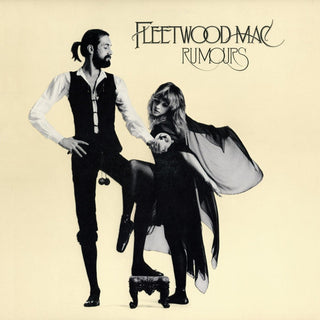
Fleetwood Mac: Rumours
![difference 33 45 78 tours Taylor Swift: 1989 (Taylor's Version) [2 LP]](https://victrola.com/cdn/shop/files/TaylorSwift1989_fd7f73da-e456-4c7d-b04b-0e6a8101705a_320x320.webp?v=1698248781)
Taylor Swift: 1989 (Taylor's Version) [2 LP]
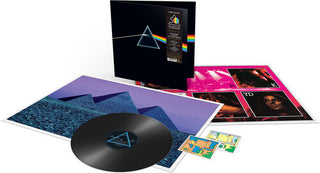
Pink Floyd: The Dark Side Of The Moon (50th Anniversary)
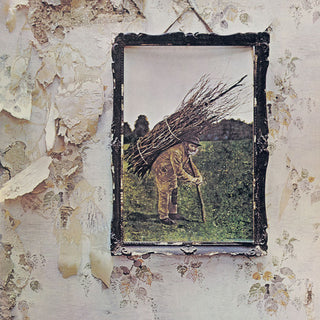
Led Zeppelin: Led Zeppelin IV
![difference 33 45 78 tours Bob Marley: Legend [Reissue]](https://victrola.com/cdn/shop/files/1531895_320x320.jpg?v=1695411493)
Bob Marley: Legend [Reissue]
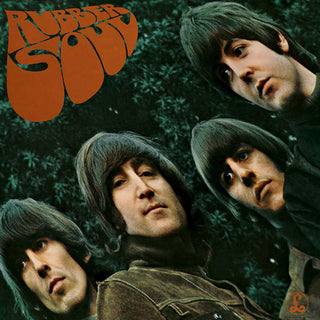
The Beatles: Rubber Soul
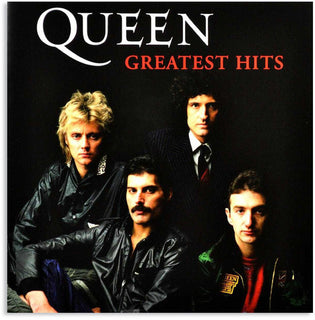
Queen: Greatest Hits I
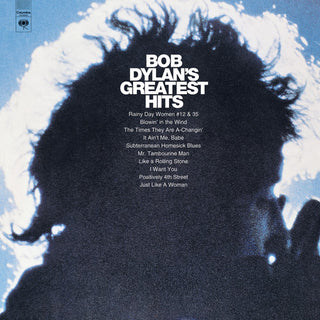
Bob Dylan: Greatest Hits
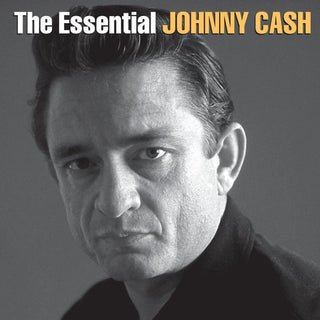
Johnny Cash: The Essential Johnny Cash
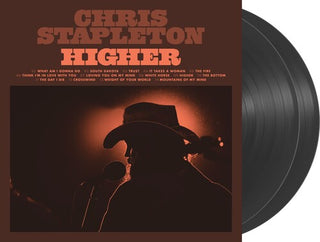
Chris Stapleton: Higher
- Music Systems View Products
- Suitcase and Portable View Products
- Turntables & Integrated Players View Products
- Wireless Turntables View Products
- All Record Players View Products
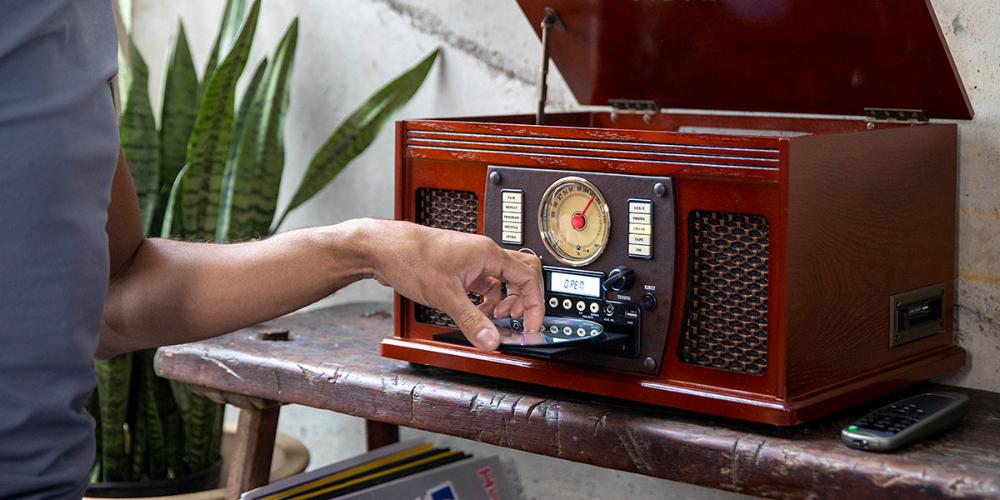
- All Bluetooth Speakers View Products
- Nostalgic Radios View Products
- Outdoor Speakers View Products
- Jukeboxes View Products
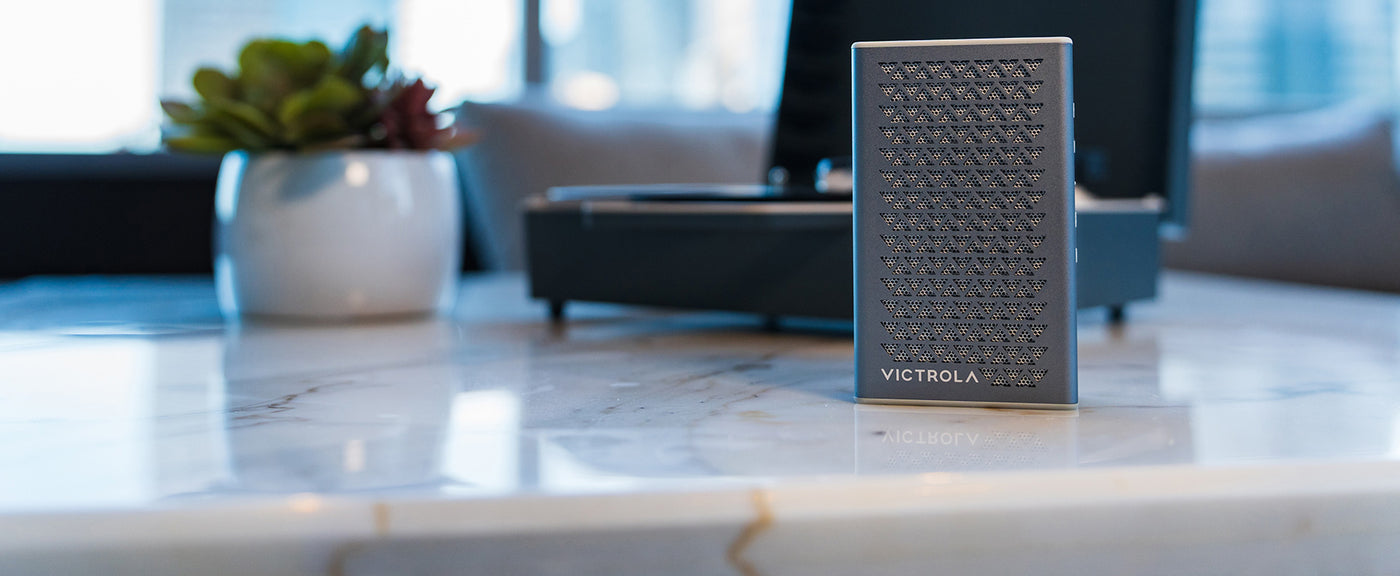
- Wood Music Systems View Products
- Modern & Mid-Century View Products
- Retro & Vintage View Products
- Suitcase View Products
- Premiere View Products
- All Products View Products
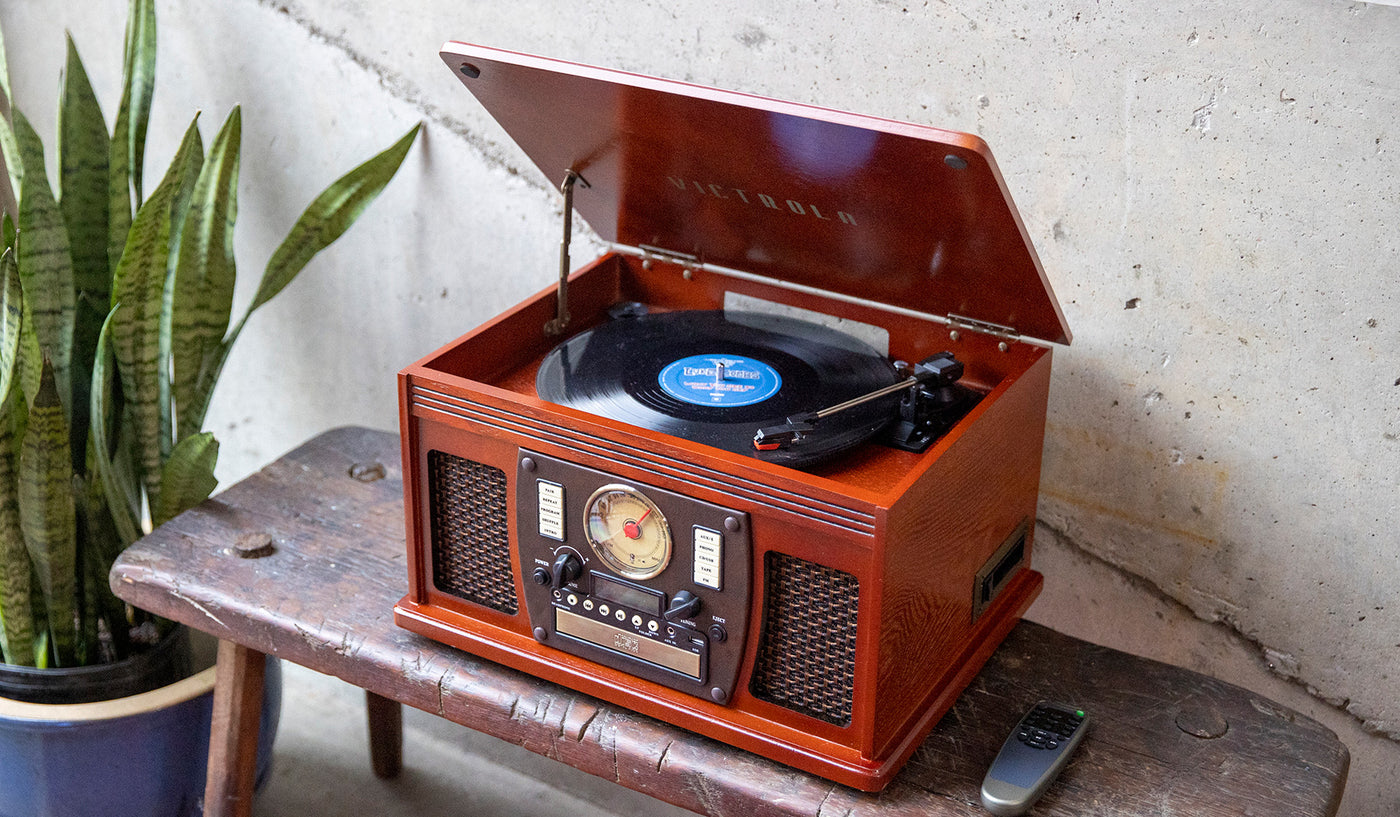
- Choosing a selection results in a full page refresh.
- Opens in a new window.
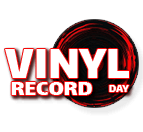
What Is The Difference Between 33, 45, And 78 Vinyl Records?
When buying vinyl, you might have noticed that some are labeled 33, 45, or 78. But what’s the difference between 33, 45, and 78 records? Today, I will reveal the “secret” of these mysterious numbers.
In simple words, these numbers refer to the rotational lp speed . The rotational speed determines how long each side of the record is. So, a 33 vinyl record is played at 33 revolutions per minute (rpm), a 45 vinyl record is played at 45 RPM, and a 78 vinyl record is played at 78 RPM. Let’s delve into the historical aspect of this topic, and then I will tell you about each speed extensively.
Historical context of vinyl records
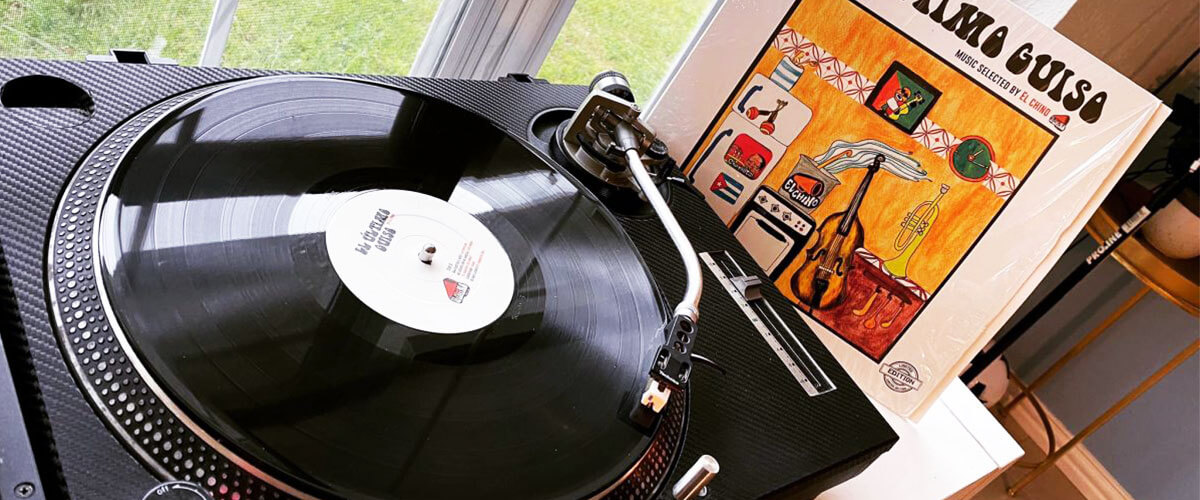
Vinyls have such a rich history, starting from the mid-20th century, as they were widely used until cassettes and CDs took over in the 1980s. They are flat, circular discs with grooves that produce sound when spun on a turntable. Emile Berliner invented the flat disc format in 1888, a departure from earlier cylindrical recordings; first, there were brittle shellac records, then vinyl came along with 33 1/3 RPM for albums and 45 RPM for singles.
Sadly, in the 1980s, the rise of cassette tapes and later CDs formed a threat to vinyl because these new formats offered greater portability and convenience. Nevertheless, collectors, audiophiles, and even younger generations still embraced vinyl for its warm, authentic sound.
Actually, the 78 RPM speed was one of the earliest standard speeds for shellac records(shellac was a brittle material used in these early records). They typically held one song on each side because of their limited playing time. Then, the 33 RPM speed was introduced in 1948, along with the 12-inch LP (Long Play) format. These records had more space, allowing for longer playing times and multiple tracks on each side. Finally, 45 RPM records appeared. They gained immense popularity, especially in the 1950s and 1960s, because of their convenience in using them for radio play and jukeboxes. Even today, 45 RPM records are cherished by collectors and enthusiasts.
Understanding RPM (revolutions per minute)
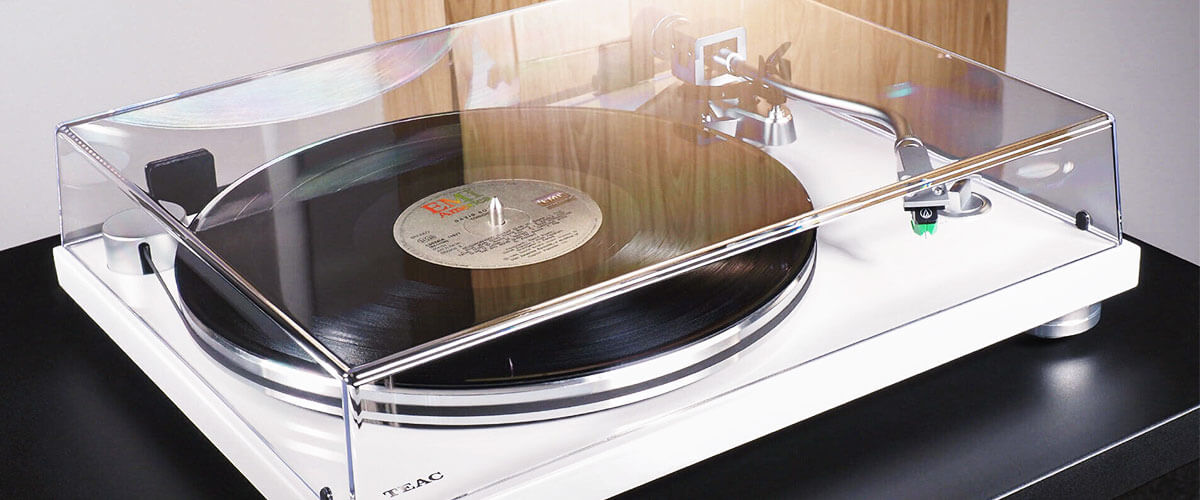
That number on the label, which might seem like a technical detail but actually plays a big role in your vinyl experience – that’s RPM. We will go through each detail about RPM in simple terms, explaining what it means, looking through their specific features, like record sizes, and how it affects the sound of your favorite music.
When it comes to listening to long pieces of music, I can say that 33 RPM records are the best option. They can hold around 20 minutes of music per side and are typically used for full-length albums; that’s why they are also known as LP records.
They are the most common type of vinyl record and can be played on any turntable. Even though 33s are played at a slower speed, they have a deeper sound than 45s(I am jumping ahead). Actually, they are typically used for classical music, jazz, and other genres that don’t require a lot of speed-up action.
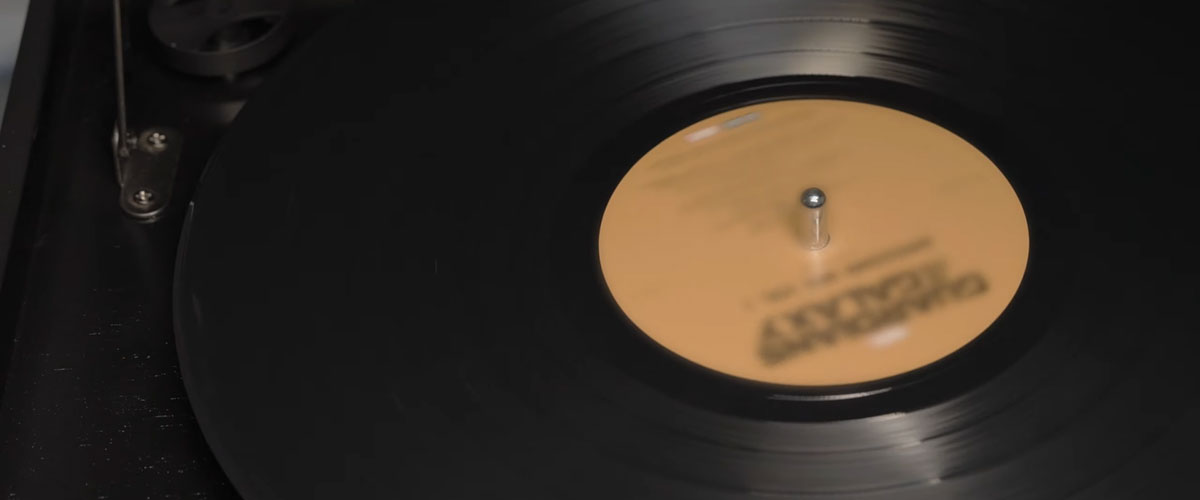
Regarding 45 RPM records , they are typically used for singles or EPs (Extended Plays), as they can only hold around five to seven minutes of music. Those records are smaller and played at a faster speed, giving them a higher pitch and a more energetic sound like rock or pop music. 45s are often made with higher quality vinyl, so they tend to sound better.
Today, 45 RPM records are primarily used mostly by vinyl enthusiasts who appreciate the unique qualities of this format. In short, 45 RPM is like a quick burst for short songs or singles, while 33 1/3 RPM is the standard for longer albums.
And, finally, 78 RPM records (the oldest type of vinyl record originally used for phonograph cylinders) are much larger and rarer, usually only used by collectors and played at a very slow speed, giving them a deep, mellow sound. In general, they can be played on any turntable, but the sound quality is not as good as 33s or 45s. Also, these records can hold around three minutes of music per side. So, if you have an old record player that can’t handle modern speeds, you’ll have to use a 78 RPM.
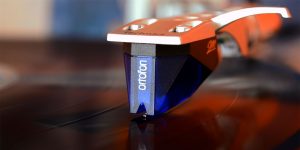
If you click a link on this page and make a purchase, we may receive a small commission at no extra cost to you.

David is experienced music lover, electronics engineer and home audio geek. He has been into vinyl since his early teens and created VinylRecordDay to share his journey with you. David also provides help and advice for those looking to start their own record collection.
We won't spam and you will always be able to unsubscribe.

33 Vs 45 Vinyl Records: What’s the Difference?

- January 26, 2024
33 (Or rather 33⅓ to be exact) and 45 rpm are the two most common vinyl record speeds and have a range of differences that are important to understand. Knowing how and why they are different helps to understand the mechanics of vinyl in more depth.
Besides the obvious fact they use a different playback speed, there are several other contrasts between 33 vs 45 (and other) speeds.
The two main differences are:
- 33s store more sound information , with longer overall playing time.
- 45s have higher audio quality (with increased frequency resolution) but can hold fewer tracks on each side.
Centrally, it’s a tradeoff between length and quality. Read on for a full exploration of the effects created by changing a vinyl record’s playback speed.
What does RPM stand for?
RPM stands for R evolutions P er M inute and measures the number of times a record completes a full 360° rotation in a minute.
For example, a 33 ⅓ rpm record makes 33 whole rotations in 1 minute of playtime, taking slightly over 2 seconds per rotation. A 45 spins faster, 45 times per minute, roughly 0.75s per rotation.
Three speeds are commonly used (33⅓, 45, and 78) when making records. 33⅓ and 45 rpm records are the most popular choices today, and 78 is more of an old-fashioned format, which is no longer being produced.
(Note – not all record players can play at 78 rpm. In fact, most modern ones don’t support this format anymore) .
Record companies pick a particular speed when pressing a vinyl based on the needs of the release. Each rotational speed has its own advantages and disadvantages.
A comparison of vinyl record sizes and common speeds.
Vinyl also comes in a range of record sizes , which tend to use specific speeds for each size.
The standard record sizes are 12”, 10”, and 7”.
12-Inch vinyl records usually come as 33⅓ for full albums and 45 for EPs and singles.
The 7-inch record size is generally cut at 45 rpm, although not always, and many vinyl collectors have 7s that run at 33. (Although 7” records are often called 45s.)
There’s always a strong reason to choose one speed over the other, but I’ll get into that in the comparative portion of this post.
10-inch records don’t have a standard speed, and you can find them pressed at 33, 45, or 78 RPM. (In the old days, they were usually 78, but these days it can be anything.)

You can calculate a record’s maximum playtime using the record’s diameter and rpm, as demonstrated in the table below.
33 Vs 45 – Playback Time Comparison Table
What are the differences – 33 vs 45 vinyl records.
The main point is – the faster a record spins, the less information it can hold.
So for 45s, get ready to be getting up and down a lot to change the record, but with 33s, you can sit down and relax.
So, what’s the benefit of increasing rpm? Theoretically, it creates higher sound quality by increasing the frequency resolution at the expense of less playback time.
Let’s take a closer look at the science.

Effects of rpm on audio quality
Under analysis, it’s clear why a higher rpm would lead to better audio quality. Vinyl moves quicker beneath the stylus as the rpm is increased. For every second the record is playing, the stylus reads additional sound information. You can see in the (simplified) table above more information fits into the same timeframe.
As a result, vinyl records at a higher speed have the ability to provide better sound quality, with more depth and detail in the frequencies, even with less distortion.
In general, 45 rpm vinyl records have superior high frequencies, particularly near the end of each side. At 33 1/3 rpm, the final inch before the label frequently sounds much worse. This is due to the record groove having a smaller radius as it gets closer to the center of the disc.
45rpm has more aesthetically pleasing sonic qualities. For example, if you spin the disc at 45 rpm, the groove velocity increases by 35%. This allows for a large increase in perceived sound quality.
As a parallel, the higher the kbps (kilobytes per second) in MP3s, the better they sound. This compares well to speeding up records. More vinyl passes beneath the stylus every second at higher rpm. The grooves of a record are analogous to a computer file’s kilobytes. We get a more accurate representation of the audio information by reading more grooves each second.
In records, a higher rpm yields the same results as a higher kbps. Faster data speeds are always preferable, and this is the same with many audio formats, even cassette tapes.
However, the recording time of a 45 is also cut by around 35 percent. The only problem here is that it results in a 45 vinyl having less room for music, which makes it unsuitable for larger recordings (although the other factors situationally outweigh this.)
Moreover, the expenses of mastering, plating, pressing, and labels also increase with 45s. But when you hear the sound, you know it’s worth it! This isn’t a marketing ploy; it’s a scientific fact.
45s Can sound louder than 33s
Because 45s offer more space for wider grooves, they allow mastering engineers a lot more flexibility in terms of volume, meaning 45s can sound louder than 33s.
Because the loudness of a record is based on the depth and width of its grooves, 45s can be louder, as their grooves are naturally wider and deeper, with more space between them.
45s can be pressed from a louder master tape, giving up to +3db increased headroom. Also, note that shorter pressings (with lower running times) can increase their volume compared to longer ones.
NOTE: While 45s often sound better than 33s, this isn’t always the case. Whilst it’s true that the physics indicates a quality advantage to 45s, there are other aspects to take into account such as mastering, access to the original tape, manufacturing quality, and so on.
It’s not unusual for a later 45 rpm edition to be remixed/remastered, particularly if the original 33 rpm version sounded terrible.
A brief history of record speeds
The history of these speeds helps you to understand why certain formats are used.
The first phonograph, created by Thomas Edison in 1877, inspired the first vinyl record speed. These were not powered electronically; instead, they used a hand crank mechanism (can you imagine…?) The final rpm fluctuated, but records were generally made to play around 80 rpm.
Emile Berliner designed the electric motorized record player in 1888. The records for this device used speeds between 70 and 80 rpm. This device popularized vinyl players in the consumer market, which prompted other companies to start manufacturing and selling them. At the time, 78 rpm was found to be a sweet spot for peak performance, and so it became the industry standard in 1925.
Because of technological advancements, when 78 rpm became the norm, it became possible to cut records at a wider range of speeds. As a result, records could be made that could be played at 33 rpm. RCA Victor released the first 33 ⅓ vinyl in 1931, although it didn’t become a popular speed until later.
These had certain advantages, such as cheaper manufacturing costs and lower surface noise, although, at the time, radio was the preferred medium for listening to music. Until Columbia Records began selling a 33 rpm record player in 1948, which spurred its popularity.
It didn’t take long for 45 rpm recordings, which were smaller records, to become popular, thanks to record companies like RCA Victor. These became popular in the ’50s, partially due to teenagers having more expendable income (also due to the quality and smaller size). Both singles but especially EPs (typically containing two songs on each side), gained popularity quickly.
Record player models were then constructed to play both 33 and 45 rpm records, as a result. Around this time, 78 rpm records were being phased out in favor of more modern formats. Generally, 78rpm isn’t found on modern turntables.
For a deeper dive, check out this article → History of vinyl and record players .
Which records are best – 33 or 45 rpm?
In truth, they both have their own strengths and weaknesses, so picking which is “best” depends on how you are measuring the competition.
In terms of space, a 33 wins, but for quality, a 45 is better. Audiophiles prefer the way 45 rpm sounds, but 33 is more practical due to the added storage space.
In a 45, more information is sent per second, resulting in a greater level of detail and, as a consequence, better audio quality. This is particularly noticeable in higher frequencies, giving the audio a more realistic feeling – a huge advantage. It also preserves further details of the original music, which are otherwise lost.
This makes 45s attractive to vinyl collectors and music lovers who obsess over audio quality and love the extra depth and resolution provided.
Then why aren’t all records 45 RPM?
Cost and space are the primary factors. Indeed, 45 rpm is much quicker than 33 rpm. Because of this, a 12′′ 45 rpm vinyl record has less music than a 12′′ 33 rpm record. As a result, if the songs are very lengthy, just one or maybe two tracks will fit on each side of a 45.
To hold everything, an LP or album would need more discs. This increases the overall production costs, including the pressing cost, mastering cost, labels, plating cost, and jackets. Because of this, 12″ 45 rpm records aren’t as prevalent as they once were, although they’re still used for promotional purposes.
Secondly, they store less audio, allowing fewer grooves on the disc. This makes them unsuitable for long-play records, which need the extra space to fit extra music. This is why 33 is still such a common format. It has the benefit of storage space, allowing for a massive increase in recording times.
How can you tell if a record is 33 or 45?
Learning to tell the difference between rpm speeds is important and helps you find records of the right style for your needs. It also helps so you can choose the right rpm speed on your record player when you spin the disc.
So, if a record is 33 or 45 rpm, how do you know?
Generally, if a record is 12”, it’s a 33. The only exception to this is when a single or EP (extended play) is pressed on a 12”, where sometimes they might be able to use 45, maximizing audio quality thanks to the shorter playing time.
7-inch tends to be cut at 45. Ultimately the best way to test it is to put it on and spin, and there’s no harm done playing it at the wrong speed. It will just sound weird, which is a clue to what the actual speed is. If it feels like a slower speed than normal and low-pitched, you’re probably playing a 45 at 33. If it sounds fast, with chipmunk-like vocals, then you probably have a 33 spinning at 45.
The speed is generally put on the central label (or jacket) if you’re not sure.
Another way to tell is based on the number of tracks per side. A 33 rpm 12′′ record is far more likely to include more than three songs on each side of the record, usually around 4-6 per side.
If there is only a single song per side of a 12”, chances are it’s a 45 unless it’s some kind of long 20-minute track or dubbed-out remix. The track count approach works nicely for 12”, although it doesn’t work so well for 7-inchers.
How do you play a 45 RPM record?
You might notice that some 7-inch records have a much larger hole than a 12”. In this case, you need to use an adaptor to play the record. Most turntables include one, although you can pick them up super cheaply.
To play it, simply pop the adapter over the center spindle, then slot the record onto the adaptor.
Then switch your turntable to 45, and get spinning. Note that not all 7-inch records come with larger holes, and you will find many that use the standard size.

Are most vinyl 33 or 45?
Most vinyl are 33 rpm, 12-inch records. You will find a lot of “audiophile” versions of 12-inch records produced at 45 rpm, obviously to maximize the audio quality.
That said, most 7-inch records tend to be 45 rpm.
What happens if you play a 45 record at 33?
If you play a 45 record at 33 you will hear the music played back in a slower, lower-pitched tone. There are no risks or dangers; nothing will get damaged. It just gives the impression that time is going slower and sounds funny. This is often used creatively in the sampling process by some music producers and sometimes even DJs.
Why are some records 33 and some 45?
In short, records use 33 to maximize play time (fitting more music on the disc), or they use 45 rpm for better sonic quality. But this is quite a lengthy topic, so check out the rest of this article for the full details.
Have any questions or feedback?
Leave a comment below and I’ll get right back to you!

I'm a passionate vinyl collector, analog fan, and lifetime enthusiast of most things audio.
On VinyliQ I help fellow vinyl collectors enjoy their hobby to the max, sharing my knowledge about and passion for vinyl.
Leave a Reply Cancel reply
Your email address will not be published. Required fields are marked *
Save my name, email, and website in this browser for the next time I comment.

Vinyl, Record Player, and Stylus care guides
Exploring the Different Types of Vinyl Records: 33 RPM, 45 RPM, and 78 RPM
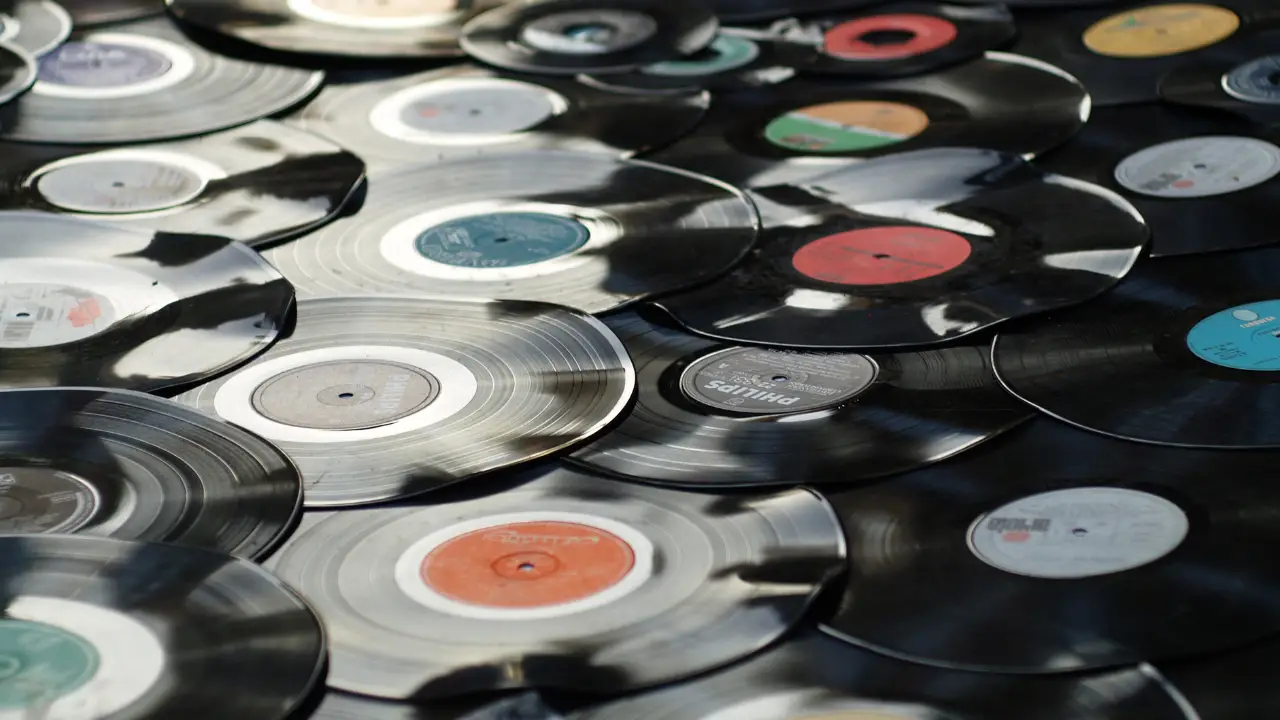
Vinyl records have stood the test of time, captivating music enthusiasts with their unique charm and warm sound. If you’re new to the world of vinyl or looking to expand your collection, you may come across different types of vinyl records, distinguished by their rotational speed.
In this article, we will explore the three main types of vinyl records: 33 RPM, 45 RPM, and 78 RPM. Each format carries its own history, characteristics, and listening experience. Join us on this journey of discovery into the world of vinyl records.
The History of Vinyl Records
Vinyl records have a rich history that dates back to the late 19th century. The format gained popularity in the mid-20th century and remained the primary medium for music distribution until the advent of digital formats. Despite facing significant challenges over the years, vinyl records have experienced a remarkable resurgence in recent times, attracting both seasoned collectors and new enthusiasts.
Understanding Rotational Speed
Rotational speed refers to the number of complete revolutions a vinyl record makes per minute. It is denoted by RPM (Revolutions Per Minute) and is a critical factor in determining the playback time and sound quality of a vinyl record. The most common rotational speeds for vinyl records are 33 RPM, 45 RPM, and 78 RPM.
The 33 RPM Format
The 33 RPM (Revolutions Per Minute) format, also known as the LP (Long Play), is the standard speed for full-length albums. Introduced in the late 1940s, the 33 RPM format allowed for longer playing times, enabling artists to showcase their creativity across multiple tracks. LPs are known for their deep bass response and excellent audio fidelity.
The 45 RPM Format
The 45 RPM format emerged in the early 1950s and gained popularity as a single-song format. These records typically contain one song per side and are often referred to as “singles” or “7-inch records.” The 45 RPM format offers higher sound quality compared to its 33 RPM counterpart. It became a favored choice for radio stations and jukeboxes due to its ease of use and quick song access.
The 78 RPM Format
The 78 RPM format was prevalent from the late 19th century until the 1950s. These records were typically made of shellac and played at a faster speed than modern vinyl records. Although 78 RPM records are less common today, they hold historical significance and provide a glimpse into the early days of recorded music.
Differences in Sound Quality
The rotational speed of a vinyl record directly impacts its sound quality. Generally, higher rotational speeds, such as 45 RPM and 78 RPM, offer better audio fidelity and reduced surface noise compared to 33 RPM records. However, the overall sound quality also depends on factors like mastering, pressing quality, and the condition of the record.
Collectibility and Availability
Collectors often value vinyl records for their rarity, uniqueness, and historical significance. Different types of vinyl records may vary in collectibility and availability. For example, 78 RPM records from the early 20th century are highly sought after by collectors due to their limited numbers and historical value. Similarly, certain 45 RPM singles from specific artists or genres can be considered collectible items.
Considerations for Playback
To enjoy vinyl records of different rotational speeds, it is essential to ensure compatibility with your turntable. Many modern turntables offer adjustable speed settings, allowing playback of 33 RPM, 45 RPM, and sometimes even 78 RPM records. However, some vintage or specialized turntables may require additional equipment or attachments to accommodate specific rotational speeds.
The Role of Turntables
Turntables play a vital role in the vinyl listening experience. High-quality turntables with precise rotational speed control and excellent tracking mechanisms can enhance the sound quality and minimize wear on the records. Investing in a reliable turntable is crucial for enjoying vinyl records of different types and maintaining their longevity.
Caring for Vinyl Records
Proper care and maintenance are essential for preserving the lifespan and sound quality of vinyl records. It is important to handle records with clean hands, store them in protective sleeves, and keep them away from extreme temperatures and humidity. Regular cleaning and maintenance can remove dust and dirt, ensuring optimal playback quality.
Building a Diverse Vinyl Collection
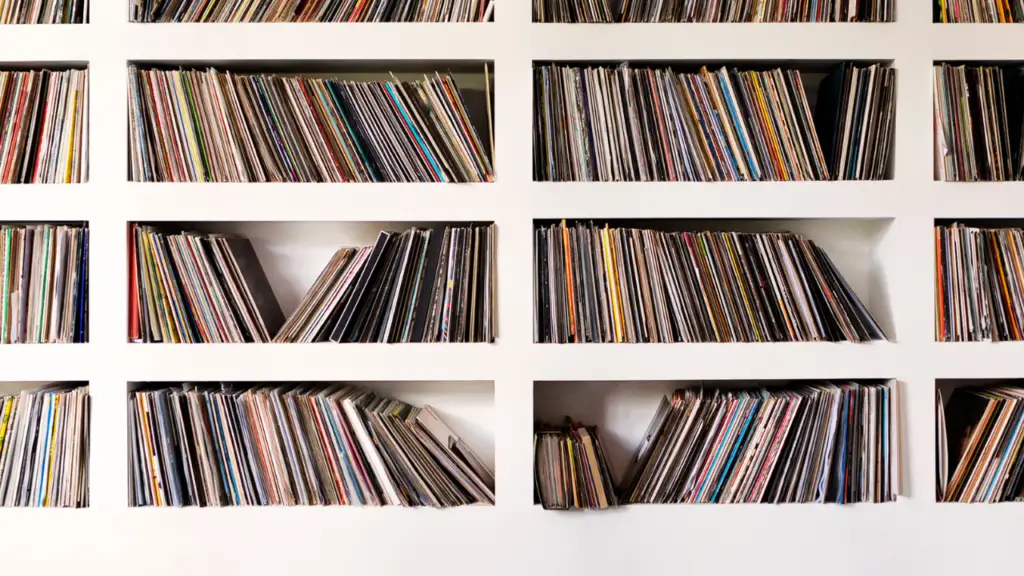
One of the joys of collecting vinyl records is the opportunity to explore diverse music genres. From classic rock and jazz to electronic and hip-hop, vinyl records offer a wide range of musical experiences. Building a diverse vinyl collection allows you to immerse yourself in different sonic landscapes and discover new artists and albums.
Exploring Various Music Genres
Vinyl records cater to a wide array of music genres, each with its own unique sonic characteristics. Whether you are a fan of the warm melodies of jazz, the energetic beats of electronic music, or the raw power of rock, there is a vinyl record out there waiting to be discovered. Exploring various music genres on vinyl allows you to engage with the music in a more intimate and immersive way.
The world of vinyl records offers a delightful journey of exploration, where music lovers can experience the magic of different rotational speeds and the distinct qualities they bring to the listening experience. Whether you prefer the long playtime of 33 RPM LPs, the convenience of 45 RPM singles, or the historical charm of 78 RPM records, each format has its own allure. Embrace the diversity of vinyl records and immerse yourself in the captivating world of music.
1. Can I play 45 RPM records on a turntable designed for 33 RPM? Most modern turntables offer adjustable speed settings, allowing playback of both 33 RPM and 45 RPM records. Ensure that your turntable supports the desired rotational speed and adjust it accordingly.
2. Are 78 RPM records still being produced today? While 78 RPM records are not commonly produced today, there are specialized labels and collectors who release limited editions or reissues of certain recordings on 78 RPM format.
3. How do I determine the rotational speed of a vinyl record? The rotational speed is usually indicated on the record label or sleeve. Look for a number followed by “RPM” to identify the correct speed at which to play the record.
4. Do different rotational speeds affect the lifespan of vinyl records? The rotational speed itself does not significantly affect the lifespan of vinyl records. Proper handling, storage, and regular maintenance are more critical factors in preserving the condition and longevity of vinyl records.
5. Can I mix and match different rotational speed records in my vinyl collection? Absolutely! Many vinyl collectors enjoy having a diverse collection that includes records of various rotational speeds. Mixing different types of vinyl records adds variety and allows for a richer listening experience.
Affiliate Disclaimer
As an affiliate, we may earn a commission from qualifying purchases. We get commissions for purchases made through links on this website from Amazon and other third parties.
About the author
I am passionate blogger, dedicated to sharing thoughts and insights on a variety of topics. With a keen eye for detail and a love for expression, I craft engaging content that captivates readers. Beyond the digital realm, I am a true music aficionado. My love for music goes beyond just listening; I am a vinyl collector, cherishing the nostalgic crackle of records and the authentic warmth of analog sound. Every vinyl in my collection tells a story, reflecting a diverse taste that spans genres and eras. Through the intersection of blogging and music, I weave a narrative that resonates with fellow enthusiasts. Whether exploring the latest releases, diving into the classics, or sharing personal reflections, I bring a unique perspective to the intersection of words and melodies. Join me on this journey of exploration and discovery, where the world of blogging meets the rich tapestry of music, all spun together by the timeless allure of vinyl.
Latest posts
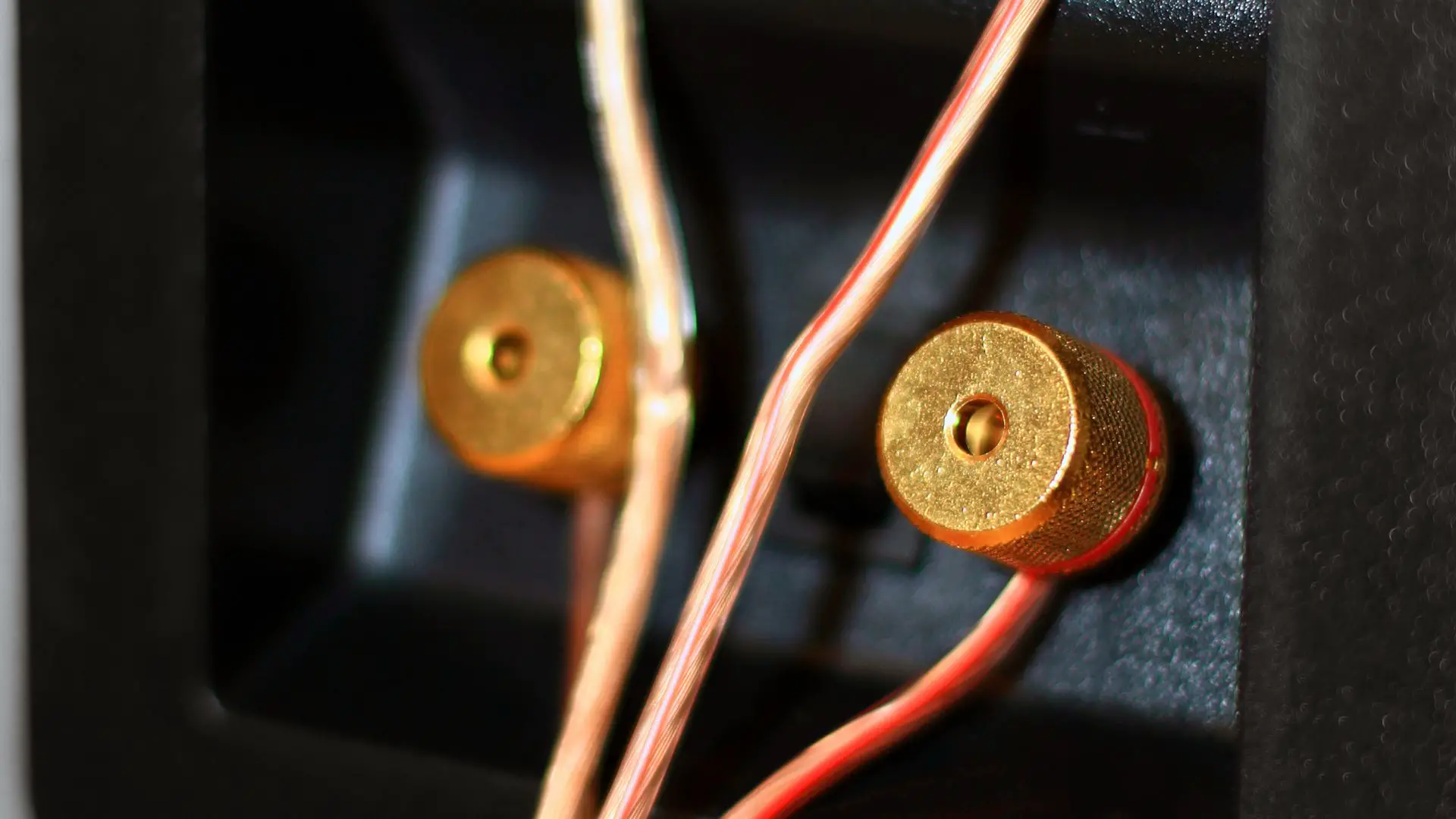
No Sound? No Problem! A Guide to Diagnosing and Fixing Record Player Audio Issues
Are you having trouble getting any sound from your record player? Many experience issues with record player audio, and it can be frustrating to try to diagnose and fix the problem on your own. With a little knowledge, you can troubleshoot and solve most record player audio issues yourself. In this guide, we will walk…

Basic Troubleshooting: Record Player Issues and Quick Fixes
Address common record player issues with easy DIY solutions for skipping, buzzing sounds, and more to enhance your vinyl listening experience.
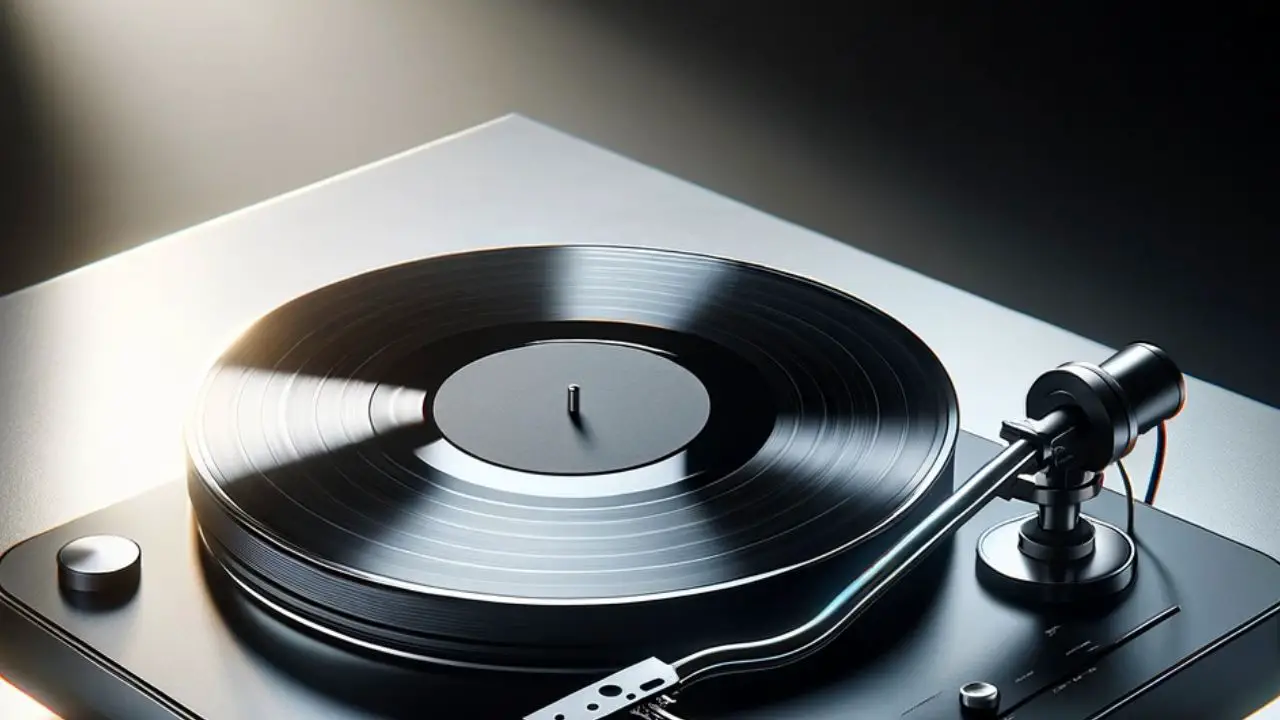
Stylus Replacement: A Guide on When, Why, and How
When it comes to turntable stylus replacement, one of the most important things to consider is timing. Replacing your stylus at the right time can help you preserve the life of your vinyl records and ensure optimal sound quality. Here are two ways to determine when it’s time for a stylus replacement: Stylus Lifespan Expectancy…
Privacy Overview
- Enseignement

Il n’y a pas de Lumniz à gagner car tu as déjà consommé cet élément. Ne t'inquiète pas, il y a plein d'autres contenus intéressants à explorer et toujours plus de Lumniz à gagner.
Quelle est la différence entre un 33, un 45 tours et un 78 tours ?
Quand est apparu le disque musical ? Comment cette invention a-t-elle évolué ? Et quel a été son impact sur la musique ? Voici l'histoire du disque musical.
L'invention du disque musical 90, puis 78 tours
Le premier disque musical apparaît en 1887. Il est écouté grâce à un gramophone : le disque est placé sur une platine et il est lu par une aiguille. À cette époque, le disque tourne à une vitesse de 90 ou 100 tours à la minute . 40 ans plus tard, on utilise le disque 78 tours qui tourne un peu plus lentement.
Le problème de ces disques est qu'on peut graver seulement 3 minutes sur chaque face. Pendant des dizaines d’années, il a donc été impossible aux musiciens et aux chanteurs d’enregistrer des musiques de plus de 3 minutes.
Le 33 tours : la naissance du concept d’album
En 1948, Columbia Records invente le microsillon . De meilleure qualité, ce disque musical tourne plus lentement : à 33 tours par minute. Le temps de lecture est alors beaucoup plus long. On passe de 3 à 30 minutes par face .
Cela permet aux musiciens de jazz de développer leurs fameux solos. Cette invention donne aussi naissance au concept d'album avec Frank Sinatra. Le chanteur a eu l’idée d’organiser les différents morceaux de ses disques afin qu'ensemble, ils racontent une histoire.
45 tours vs 33 tours : single vs album
Un an plus tard, on invente le 45 tours. Ce disque est conçu pour concurrencer le 33 tours : il coûte moins d'1 dollar. Mais le 45 tours a des limites : il ne peut contenir qu'une seule chanson de 5 minutes par face. C’est la naissance du single.
Le combat entre le single et l’album a duré 30 ans. En effet, les singles, qui ne coûtent pas cher, ont très bien marché auprès des jeunes et ont permis de diffuser un autre style de musique : le rock'n'roll.
La suite, vous la connaissez : l'arrivée de la cassette et du CD , puis du MP3 et enfin du streaming .
Réalisateur : Nicolas Beguet
Auteur : Benjamin Valière; PV NOVA
Producteur : France Télévisions; Goldenia studios
Année de copyright : 2018
Année de production : 2018
Publié le 30/01/19
Modifié le 29/12/23
Ce contenu est proposé par
- Je crée mon compte
- Je me connecte

Gagne des Lumniz, passe de niveau en niveau et révèle tes talents en remportant des défis !

Rejoins-nous dans la communauté Lumni pour encore plus de fun ! Si tu n’en as pas, crée ton compte : c'est gratuit .

Découvre chaque semaine, les nouveautés éducatives pour apprendre autrement dans ta boite e-mail.

Understanding vinyl formats and standards - the practical guide for beginners
33 rpm, 45 rpm, ep, 12-inch, lp, single ....
You are stepping into the vinyl record universe and you are puzzled by the different names you hear. This article is designed for you...
Most frequent standards:
12-inch vinyl record = 33rpm = album - Lp = diameter size of 30 centimeters.
7-inch vinyl record = 45rpm = SP = diameter size of 17,8 centimeters.

In a 12-inch (30 centimeters) cover, you find:
most often an album 33rpm or LP , with two sides lasting 20 to 30 minutes each.
sometimes a maxi-single or EP with one track on each side lasting about 10 to 12 minutes.

In a 7-inch (17 -18 centimètres) cover, you find:
most often a SP or Single with one track on each side.
less frequently an EP providing more than two tracks.

Further details
Different glossaries overlap and interfere with one another.
Names in inch refer to dimensions :
- 7-inch stands for a vinyl with a diameter of 17,78 centimeters.
- 10-inch stands for a vinyl with a diameter of 25,4 centimeters.
- 12-inch stands for a vinyl with a diameter of 30,48 centimeters.

Names with rpm indicate rotation speed:
About some characteristics of the 33rpm:.
- Gatefold albums have a special cover which can be opened in two like the one of a book. There are also double albums , triple albums or vinyl box set .

About a few exceptions
45rpm or 45 tours in french :.
The single or SP « Single Play » contains one tracks per side.
EP or Extended Play or Super 45 tours (in French) is a vinyl record with more than 2 tracks on each side in a 7-inch size, rarely released nowadays. In the U.K. usually they have a one track side A and 2 tracks side B. In France, n the 50'ies and 60'ies, they released Super 45 tours with two or three songs on each sides.
The Maxi-Single ( Maxi-45 tours or Maxi in France) is a large size 12-inch (30 cm) vinyl record. Its listening time is about 10 to 12 minutes. The recording usually includes only one track per side. They were initially addressed to DJ's.

SP, EP, LP, are English names that indicates the lisenng time and the number of tracks.
- SP = Single Play : one track per side whatever the dimension of the vinyl, 7-inch or 12-inch
- EP = Extended Play : a 7-inch vinyl record - 45rpm with more than 2 tracks
- LP = Long Play : a 12-inch album or 33rpm vinyl.
Another standard, another technology, the 78rpm...
Also called the 78s , they are the oldtimers of the record world. They do not belong to the same category as the 45rpm or the 33rpm. They were made of shellac resin es instead of vinyl. The grooves on the 78s were much larger than the later microgrooves of LPs and 45s and the needles were larger too. 78s were recorded and played back ‘acoustically’, without any electric amplifiers or microphone. The microgrooves are about 4 to 6 times smaller than the old 78s grooves. Therefore it is possible to put more of them on a record side and to obtain a longer track. The microgroove technology gives access to stereophony, helps reduce background noises and improves the sound quality.

The 78s is developped along with gramophones and phonographs, mechanical devices for reading music. Instead of a stylus, there was a big needle for the reading of the sound. The 78s is the means of musical broadcasting during the 1920s to 1950s era, after which the microgrooves supplanted it. The 78s are heavy, thick, black discs, with various diameters from 10 to 12-inch and paper sleeves characterized by a large hole in their middle.
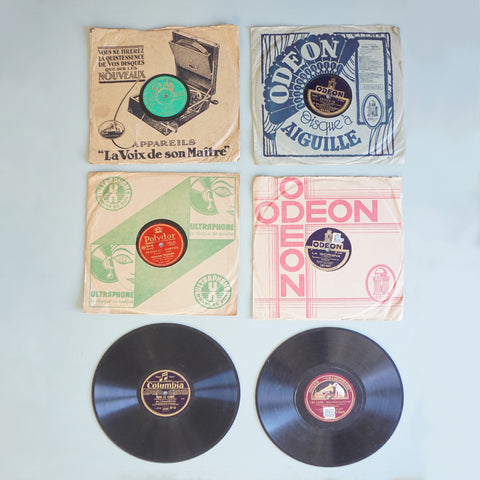
Recordings were usually one track per side. The 10-inch ones, lasting about 3 minutes were dedicated to popular songs and the 12-inch, lasting 5 minutes to classical music.

- The Differences Between 33/45/78 Records
- Date: December 4, 2022

This post contains affiliate links.
There’s a lot of talk about the differences between 33, 45, and 78 records. Any vinyl enthusiast in the making has had this question in mind: How can I recognize which record format fits me best? The answer is the type of record player used and the RPM of the record in question.
There are several significant things to consider to help differentiate between 33, 45, and 78 records. The first is the size of the record, the second comes down to the material, and the third includes revelations per minute (RPM).
Vinyl has been making such a comeback in the last decade or so, and it looks like it’s not stopping anytime soon. DJs and music connoisseurs aren’t the only ones thrilled to dust off their worn-out turntables. The younger generations are here for it too, and they’re in need of some vinyl 101.
It’s not possible to play any type of record on any turntable. There are record players that can play both 33s and 45s. Most of the time, a single turntable only plays one kind of record at a time.
Vinyl production has reappeared in recent times. This essentially includes 45s, also known as LPs. This format is beloved among record companies, as it can contain a full album. 33s come up in record stores or online sales, but they aren’t in demand as much.
Since 78s have been out of production for years, the chances are a turntable to play them on won’t be easy to find. Vintage turntables can do the job, but they are hard to come by and even harder to maintain.
Industry demands have a lot to do with the types of records circulating. The public is less interested in the 78s due to their obscureness and lack of proper use. This wasn’t always the case, though.
Table of Contents
History of 78 Records
The name ‘78’ comes from the number of revolutions per minute (RPM) this record plays at. It represents how many times it can spin on the record player in a single minute. In the beginning, the speeds varied from 60 to 130 RPM. (1)
Since 1894, Berliner’s Gramophone Company started selling 70 RPM 7-inch records. Later on, the standard became 78 RPM due to the speed of the manufacturing machines. It then spread throughout the entire record industry. (1)
Shellac was the material most commonly used to make 78s. It comes from a resin that lac bugs leave on trees. This resin mixes with alcohol, and a new component, shellac, gets made. (2)
Before this, companies made records from glass and zinc. These materials were too fragile and incapable of being used for mass distribution. Because shellac was sturdier and moisture-resistant, it quickly became the medium of choice. (3)
The records had grooves carved in that contained the sound info. When a gramophone needle traced the markings, it created vibrations. A speaker transferred them into sound. (3)
Vintage turntables needed a person to operate them. They were hand-cranked up until the 1910s. That was when Berliner produced the first automatic gramophone, which could play at a higher speed. (3)
The first 78s could only store about 3 to 5 minutes worth of music. They were single-sided, so the record limit was a song or two max. It wasn’t until after WW2 ended that the industry introduced vinyl records. (2)
The Invention of Vinyl Records

Because shellac wasn’t the lightest of substances, record companies were looking for other solutions. Polyvinyl chloride appeared to be the next best thing. It didn’t weigh as much, it wasn’t as noisy as shellac, and it broke less easily. (4)
Records made out of vinyl could also store more sound. The movie industry first introduced them for soundtrack purposes in 1926. The pieces of vinyl were increased to 16 inches and could play 11 minutes of sound. (4)
Their speed had to go down from 78 to 33 1⁄3 revolutions per minute. They still had the same grooves used in the original 78s. 33s also came in acetate form, which the radio industry was using to tape their shows at the time. (4)
The sound of the 33s was incomparably better than the one coming out of the 78s. Vinyl didn’t make as much noise when the needle was pressing onto it. Both the public and the music industry loved it, so they researched making even longer playing records. (4)
The LP (Long Play) came into existence in 1948. It played at 33 RPM, and it appeared in 2 formats: 10 inches and 12 inches. The 45 arrived a year later, as competition to the LP. It was smaller (7-inch), yet the grooves were closer together. (4)
The record company RCA Victor also released EPs (Extended Play) as 45s. It didn’t catch on at the time – the 45s replaced the 78s for singles only. As music artists gained popularity, their audiences wanted more from them. Fewer singles and more albums turned out to be the recipe for success, and little by little, the 78s lost traction. (4)
78s Vs. 45s
The similarities between the 78s and the 45s are apparent: both records play music by having the turntable trace their grooves with its needle. They can also appear in the same size: 10 or 12 inches. Both 45s and 78s come from either shellac or vinyl. However, it’s their dissimilarities that matter here.
Besides the speed, the most notable contrast is the amount of playing time the record holds. The 78 couldn’t hold more than 5 minutes of recorded sound, so it became obsolete. The 45 contained microgrooves with a closer imprint in the vinyl than on a 78.
The microgrooves ensured more music per side, plus both of the sides were playable, unlike on the 78. It gave rise to a new way of releasing music, so LPs and EPs were born. Artists had more to say, and their fans could enjoy their tunes for longer.
45s had intricate art on their covers to convey the messages the albums carried. Creatives connected to people from all over the world via this new medium.
The sonic quality of the 45s was much richer compared to the 78s. Though vinyl scratched more due to its lightness, its surface didn’t create noise. With less room for dissonance, the public embraced the 45s wholeheartedly.
Turntable companies recognized this movement too. 45s were smaller, so they took up less space than 78 RPM records. A new generation of record players flooded the market. (2)
It’s tricky to locate a vintage record player that plays 78s. If you stumble upon these types of records, invest in a 78 adaptor that switches the pulleys within the turntable. Only then will the turntable be able to play at 78 revolutions per minute. (2)
78s Vs. 33s
Mass manufacture of the 78s didn’t stop until the 1950s. Children’s records seem to be the last types of 78s ever produced back in the 1970s. (5)
33s and 45s became more and more sought-after. Every home had a record player, and everyone had their genre of choice. From rock and roll to gospel and soul, all recording artists released their new music in this way.
As opposed to predominantly acoustic 78s, the industry started using new technology to record. Electrical recordings used a microphone to convert vibrations to an electrical signal, which connected to a stylus. A stylus cut through the surface of the record, leaving a groove behind. (5)
Although the 33s typically don’t hold as much music as the 45s, they helped get rid of the 78s. 33s played for around 20 minutes per side in the beginning. Later on, they could store up to 60 minutes’ worth of music. (1)
33s and 78s share the same size: they came in 10 or 12-inch formats. They play at opposing speeds, the first at 33 RPM and the latter at 78.
As far as material is concerned, 78s consisted of shellac. 33s could be vinyl or lacquer-covered recordings. 78s and 33s share a resemblance but have a different feel to them.
45s Vs. 33s
The 78 recording was the predecessor to the 45 and the 33. It couldn’t compete with modern times as well as the other two for several reasons. Shellac used to produce the 78 was difficult to work with and even harder to take care of. The records were wide and large, thus incompatible with newer turntables.
The 45s and the 33s stored more sound information, making them ideal for recording more than just singles. They both contained microgrooves made out of vinyl. It also meant the sound was smoother, as it allowed for high-fidelity. (2)
The most significant difference between the two was in their size. The 45 was smaller than the 33; it was a 7-inch record, while the 33 was 10 or 12. They also varied in speed – the 33 was slower than the 45.
45 records were more popular than the 33s because of LPs. They allowed for full album versions instead of more individual songs per side. Because 45s played faster, they sold better.
Record companies competed using 33 and 45 RPM records. Marketing strategies tried to distinguish between the two, though the similarities were unmistakable. Over time, 33s fell into obscureness.
45s still sell nowadays. They aren’t reserved for vinyl collectors only; they appear across all genres of popular music. Their recent comeback was unexpected.

Revival of Vinyl Records

Ever since the 1990s, records of all kinds started coming back into fashion. Music lovers couldn’t get enough of old recordings of late artists, vintage special editions, 80s records, etc. What nobody saw coming was the value vinyl has created for new listeners.
We’re all fond of nostalgic items that bring us back to happier times. Ticket stubs from a great movie or worn-out letters from dear friends make us feel emotions we haven’t felt in a while. Vinyl records touch that same spot with their retro charm.
Record companies stopped making vinyl because of the emergence of the CD in the late 1980s. Records didn’t sell as well as they used to, and the audiences were more interested in digital than analog formats. (6)
It all changed with subcultures and the steady rise of alternative scenes. They embraced what mainstream popular music was trying to shut down. Their roots stemmed from a real place, which included playing records.
Not all of the records produced throughout history found their way back to modern turntables. 33s were less famous than the LPs. 78s were unplayable except for the selected few who boasted with legitimate equipment.
45 RPM recordings combined the best of both worlds. They represented a connection to history while holding space for the contemporary to thrive. That’s why the industry still produces them today. It might also be the reason to keep them in their plans for the future, who’s to say?
In 2020, US-based vinyl lovers bought 27.5 million LPs. It was almost double the number of LPs sold the previous year. It was more than 30 times more compared to 2006 when the vinyl comeback began. (7)
While 78s didn’t make the cut to this century, 33s and 45s did. Because of their devotion to creativity, 45s hold a special place on crates diggers’ shelves. With their nuanced covers and elaborate narratives, they tell stories other music formats don’t.
Format Wars
Before records became such a hit, radio reigned the airwaves. Everybody had a radio receiver back then so they could tune into their favorite stations. It was the prime source of news, music, and entertainment.
The industry developed 8-tracks and cassettes using magnetic sound recording technology. They could be played via radios, and later on, walkmans. Both 8-tracks and cassettes were well-liked, yet not enough to survive in the 21st century. (8)
Tapes weren’t enough to please true music enthusiasts who wanted to experience their music. Records came along, first the 78s, then the 33s and 45s. They ruled over the music market for decades.
Everything changed when digital came into play. In 1982, Sony and Philips released the compact disc or the CD. It enabled digital encoding of sound using laser technology into a small round piece of plastic. (9)
The CD could store much more audio info than any type of record. Lots of famous artists switched onto releasing CDs only already during the 1980s. There was a side to it that took the recording companies by surprise, and it had to do with its price.
Who doesn’t remember PCs with CD burners (or friends who owned them)? It was a shortcut to getting an album you’d wanted but didn’t have to pay for it. As soon as the music industry took notice, it was already too late. Record companies lost a lot of money, and artists started suing for copyright infringement. (9)
MP3s took this on a whole other level. The industry compressed music into this format that was even more digital than CD; it was intangible. MP3s roamed around the internet and its various sharing platforms, such as LimeWire. There was no way to control their fluctuation or the fact that very few people paid for them. (9)
Digital music formats competed with one another, but they could never replace the feeling of a recording. The emotional attachment was greater than any ease of access. In the long run, analog won. It didn’t even matter if the records in question were 45s, 33s, or 78s, as long as they played.
How To Play 33/45/78 Records
To play your favorite 33s and 45s, all you need is a decent record player. Make sure to check the speed setting since 33s play at a slower speed than 45s. As for the rest of the equipment, use what you normally would: your speakers, as well as amps and preamps.
For 12-inch records, it isn’t necessary to adjust the speed. These are primarily 33s, though a few 45s come in this size as well. If you’re in possession of a 7-inch record, meaning a 45, change the speed setting to 45 RPM. (4)
This procedure isn’t as simple when it comes to 78 recordings. The first thing you need to take into account is choosing a turntable that ranges between 60 and 90 RPM. Remember, 78s play at a higher speed, but not all of them are set precisely at 78. (10)
The cartridge needs to be stereo, and the styli needs to have a tip so as to play the 78 records. You’ll also need an amp that has a mono as well as a stereo set. Last but not least, plug in your favorite speakers – just because the record is old, it doesn’t mean the sound will disappoint. (10)
It’s also possible to use adaptors which insert into the records to play them. It’s probably not any day that you’re able to play a vintage record, so take all the steps to ensure a quality experience.
There are certain things to bear in mind when choosing between 45s, 33s, and 78s. Each of these has its advantages and disadvantages upon playing and handling.
Pros and Cons of 33s/45s/78s
33 and 45 recordings share a lot of the same benefits. They’re usually made of vinyl, have more playing time than the 78s, and are compatible with most turntables. On the other side, they shatter and scratch more easily.
Pros of 33 Records:
- Lacquer-based 33s are more resistant to scratches
- Good sound quality
- Longer playing time than 78 RPM recordings
- Vinyl-based 33s have hi-fi sounds
Cons of 33 Records:
- Larger than 45s – mostly come in sizes of 10 or 12 inches, meaning not all record players can play them
- 20 minutes of playing time, which is less than the 45s (no possibility of LPs/EPs)
- Slowest RPM
45s are in demand for a reason. They stood the test of time because of their many qualities, such as long play time and smaller size.
Pros of 45 Records:
- Smallest size out of all the records (7-inch)
- Made out of vinyl, a lighter material than shellac
- Long play time (60 minutes), which enabled the release of LPs and EPs
- High fidelity sounds
Cons of 45 Records:
- Vinyl scratched easily and wasn’t resistant to moisture
- Not compatible with all turntables due to small size
- Alterations to original music due to scratches
Even though it had its faults, the 78 was a beloved record format for a very long time. It had certain advantages over the 33 and 45 due to its physicality.
Pros of 78 Records:
- Shellac didn’t allow records to warp
- Moisture-resistant
- Scratch-resistant due to the hard exterior
- Unaltered original music
- Quickest RPM
Cons of 78 Records:
- Limited playing time – 3 to 5 minutes, only singles could be released on 78s
- Large in size – 10 to 12 inches
- Single-sided only
- Larger grooves collected more dust within the records
- Easily shattered
- Compromised sound quality
- Mono sound only
33s, 45s, and 78s each had their own time when they were the record of choice. A hundred years ago, nobody could imagine spending their every day without playing a 78 on a jukebox. Genres such as jazz wouldn’t have the platform as they had with the 78 on its side.
Due to their nature, the 78s didn’t have a long shelf life. They were only good for releasing singles, and their primary substance, shellac, wasn’t sustainable.
33s and 45s stepped in the recordings game in the 1940s and are still going strong. They have gone from unnecessary to nostalgic to acceptable anywhere. Without LPs, many music artists would never have the chance to communicate their message to the world.
33 recordings weren’t as well-loved as 45s because of their limited playing time. They still had credit with their audience and continue to be valued collector’s items today.
45 RPM records have more pros than cons in regards to the trace they’ve left on music. Without them, there wouldn’t be as much attachment to vinyl as we know it today. They’re an integral part of the culture of not only music but art as a whole.
Significance of 33/45/78 Records
Shellac and vinyl records combined have made an impact on the music industry and the public alike. No other format in the history of music has had such an extent as recordings have.
There’s something warm about records that isn’t there with other analog options. Records feel like a safe harbor, and playing them is a process. It isn’t always easy, but we need it so we can feel the music.
33s and 45s outlived 78s, but they also outlived CDs, 8-tracks, and cassette tapes. There was never an interconnectedness with the latter as there is with records. This is especially true for wax records, which still spin today.
The future of recordings may be uncertain, but it’s there. 45s, in particular, have shown that they’ve got an audience that isn’t going anywhere. Even the younger generations are willing to learn how to play records and keep their story going.
Artists around the globe are able to take part in this interchange of feelings and memories vinyl brings with it. They don’t have to settle for a medium that doesn’t resonate, nor do their fans. It goes for the content that’s on the record cover, as well as the one that goes within.
With such attention to detail, it’s no wonder records went through their renaissance. There isn’t a single other format like that in our recent history that got the recognition vinyl has. It was all thanks to the public that wanted more out of their music.
Markets follow the needs of their consumers. It’s soothing to know that there’s power in the decision-making process behind how we enjoy music. It’s not all about making money; there’s something in expressing the right sentiment. 33, 45, and 78 records can do that and much more.
Which Record Is Better: 33, 45, or 78
The answer to the question which record out of these three is the best one comes down to your personal preferences. If you don’t mind playing a single song at a time, go for the 78 record. This is best advised to classical music lovers who don’t have a problem with less-than-perfect sound quality. 78s are difficult to come by and need the proper TLC and an adequate turntable to play them.
33s and 45s are the record formats to go for if you’re in the mood for an authentic listening experience. Take a walk down memory lane and see for yourself what it was like to immerse yourself in the music of your choice. Accompany either of these with a suitable record player and watch the magic unfold.
- Related Articles
- Are Old Record Players Valuable? Everything You Need To Know
- New Vinyl Records Vs. Old: Which Is Better?
- Do All Record Players Use The Same Needle? Let’s Find Out
- Is Vinyl and LP the Same? Let’s Find Out!
- What Is a 45 RPM Adapter? Let’s Find Out
- https://en.wikipedia.org/wiki/Phonograph_record
- https://sumikophonocartridges.com/78-rpm/
- https://www.thoughtco.com/emile-berliner-history-of-the-gramophone-1991854
- https://en.wikipedia.org/wiki/LP_record
- https://web.library.yale.edu/cataloging/music/historyof78rpms
- https://en.wikipedia.org/wiki/Vinyl_revival
- https://www.statista.com/chart/7699/lp-sales-in-the-united-states/
- https://en.wikipedia.org/wiki/8-track_tape
- Casey Rae: “Music Copyright: An Essential Guide for the Digital Age”, p.30
- Roger Beardsley: “A Guide To Playing 78rpm Records” ( https://www.charm.rhul.ac.uk/history/p20_4_6.html )
VacationVinyl.com is a participant in the Amazon Services LLC Associates Program, an affiliate advertising program designed to provide a means for sites to earn advertising fees by advertising and linking to Amazon.com. We also participate in other affiliate programs which compensate us for referring traffic.
Related Posts
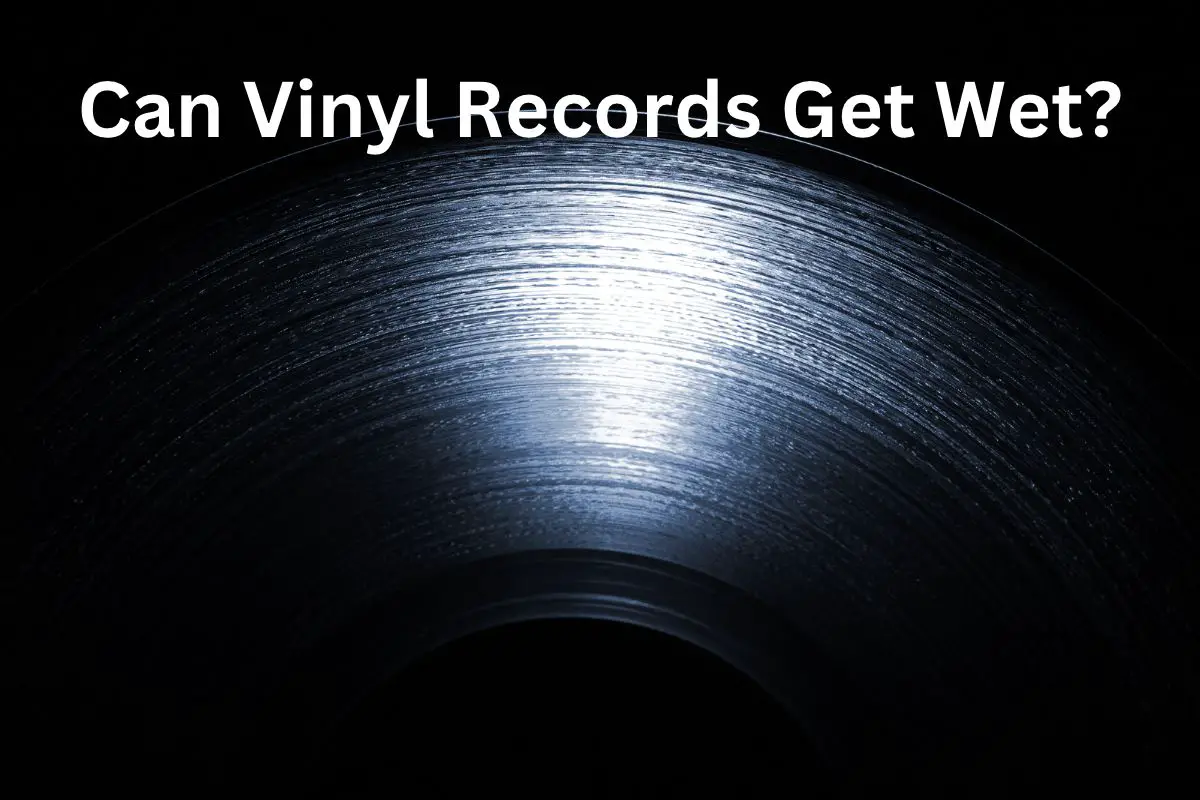
Can Vinyl Records Get Wet? (Let’s Find Out!)
This post contains affiliate links.If you’re an avid vinyl collector, you probably do all you can to keep your records in pristine condition. When it comes to cleaning, can vinyl records get wet? Vinyl records can get wet, and water won’t damage them because they’re made of polyvinyl chloride (PVC), a water-resistant material. However, you…
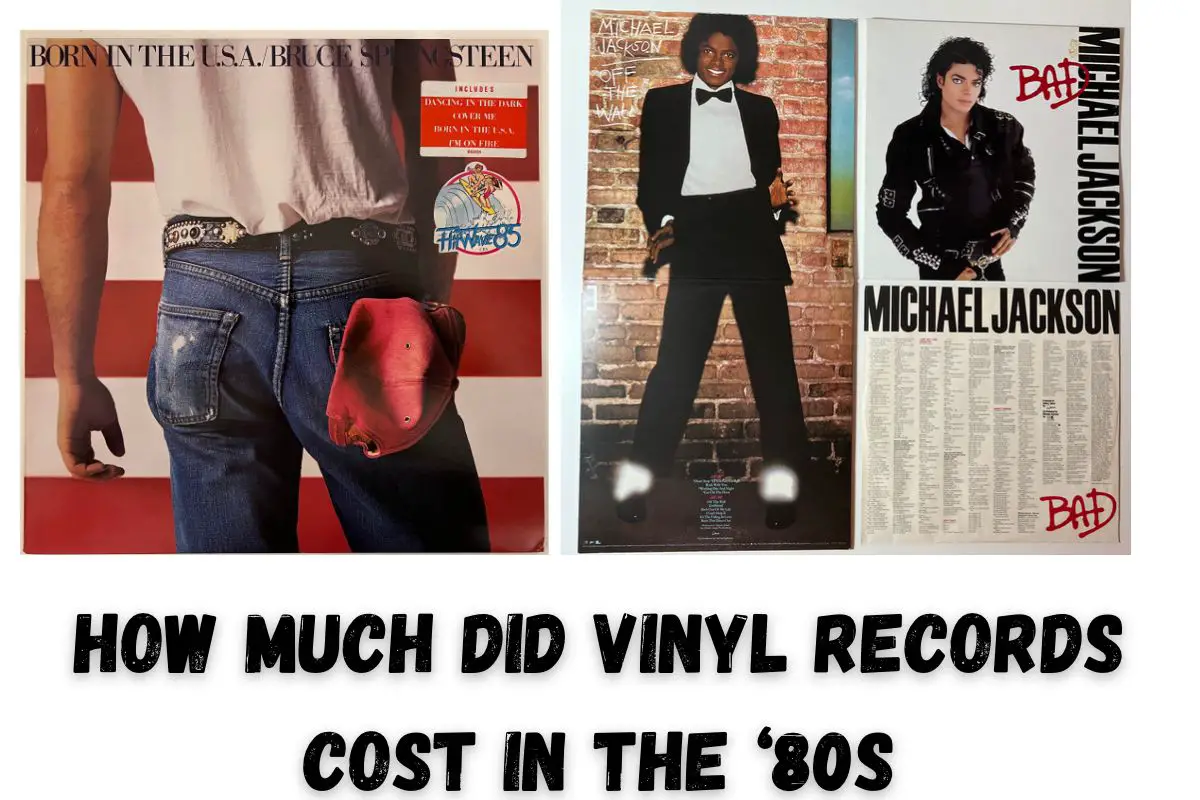
How Much Did Vinyl Records Cost in the ‘80s
This post contains affiliate links.Music was an integral part of the 1980s — the era just wouldn’t have been the same without big hair bands, Madonna and Michael Jackson. Interestingly, it was also in the 80s when cassettes and CDs began outselling vinyl records despite costing roughly the same. So, how much did vinyl records…
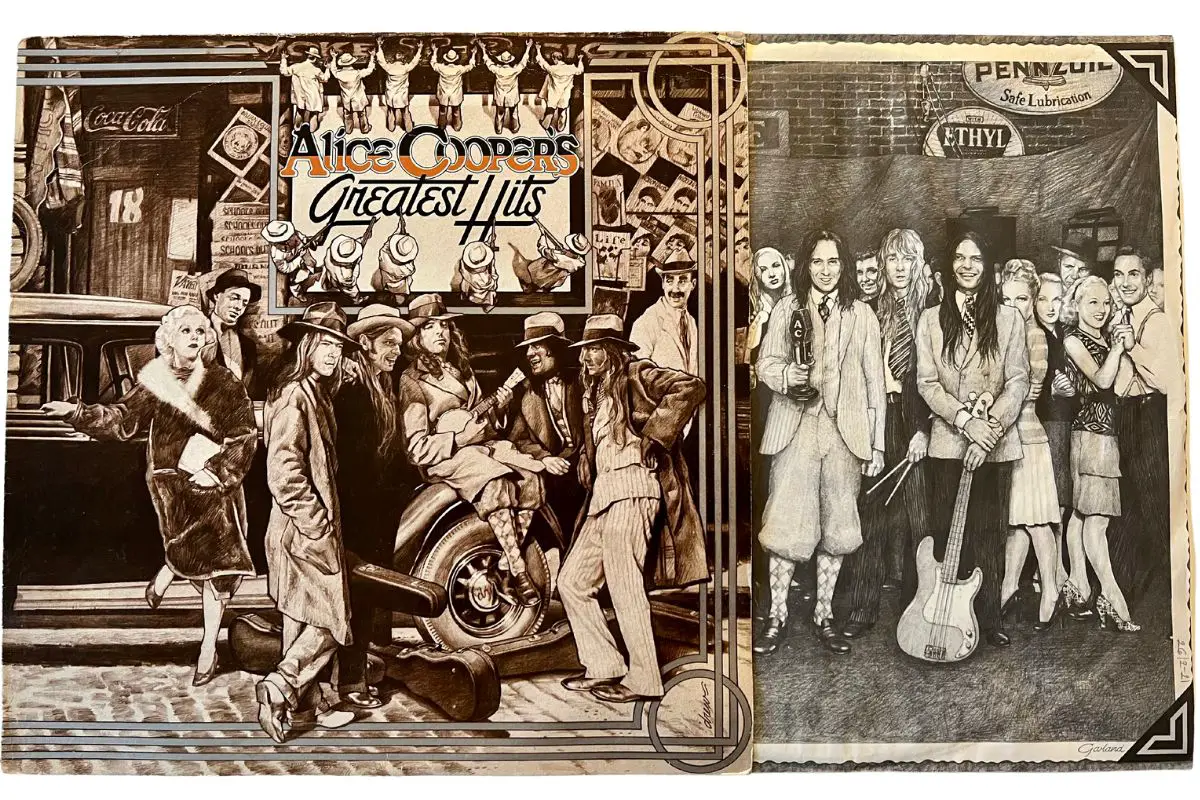
Spotting Fake Vinyl Records: A Comprehensive Guide to Authenticity
This post contains affiliate links.Buying vinyl records is exciting and rewarding if you don’t purchase fake, low-quality records. It can be difficult to differentiate an official record from a counterfeit one, but it is possible. How do you identify phony vinyl records and save yourself some money? You can spot fake vinyl records from details…

Notes On Vinyl
The Difference Between 33 vs 45 Vinyl: All You Need To Know
Are you trying to make sense of all the letters and numbers that have come to signpost so much of the record-collecting experience? Are you looking to find out the precise differences in the dichotomy between 33 vs 45 vinyl?
Well, look no further, for today this is precisely what we will be elucidating for you, hoping to enlighten you on some of the key differences and points of consideration for an aesthetic appreciation of the variations between 33 vs 45 vinyl rpms.
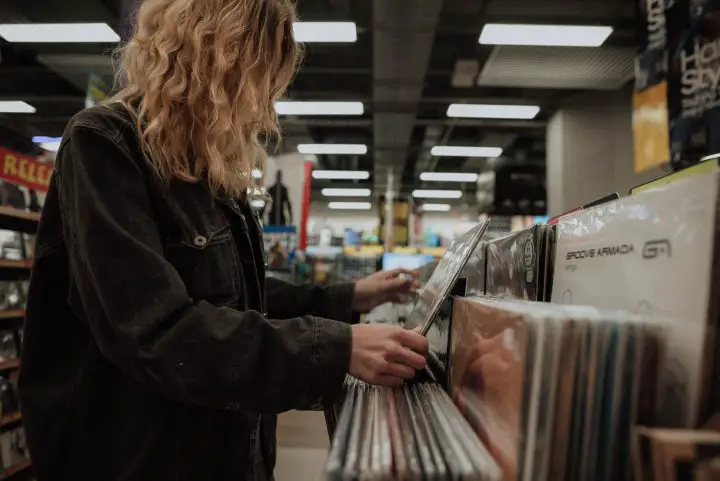
Table of Contents
7 inch vinyl records, sound quality, final tones, faqs 33 vs 45 vinyl.
One of the central differences between 33 vs 45 vinyl rpm is the respective sizes of these kinds of vinyl record speeds.
Generally, a record played at 33 rpm will be larger than a record intended to be played at 45 rpm. A record played at 33 rpm will tend to be around 12 inches, in fact. This harkens back to the early days of vinyl technology when Columbia Records began selling these larger discs under the pretext that they could hold significantly more music than any other existing disc at the time, including a whole range of vinyl record types .
This tradition continues to this day, where the dichotomy of 33 vs 45 vinyl comes to symbolize the parallel dichotomy between 12-inch records and 7-inch records. The 7 inch record comes with the task of holding sound from quite a different angle. Where 12 inch vinyl records are traditionally used to hold longer form releases like albums or EPs, the 7-inch has come to hold shorter releases, like shorter EPs and singles.
In fact, the term single comes from these days, when a single set of songs would be held on these 7 inch discs and played at 45 rpm for the sake of higher audio quality.
The lines are not so clear cut, however, as there exist such things as 12 inch singles, which instead of holding a whole album seek to play an extended mix of a single or simply hold a longer form song without sacrificing any of the sound quality.
For this reason, a 12 inch single record spins at 45 rpm usually, particularly popular among various styles of dance music, where the audio quality over massive speakers is integral to the sanctity of the vibes.
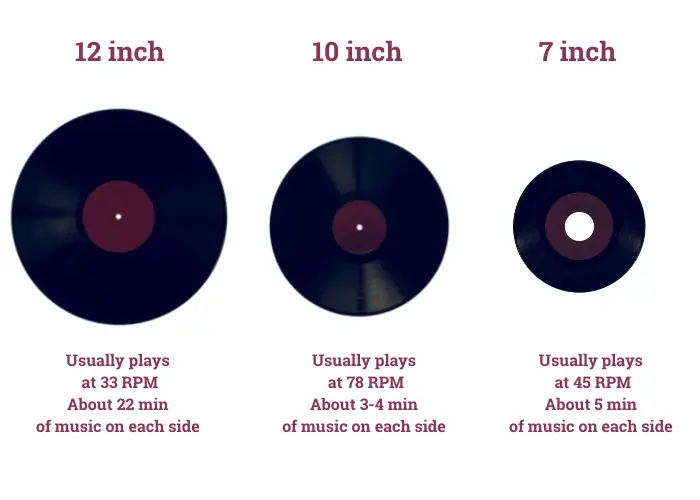
This size of vinyl record is almost certainly going to be played at 45 rpm, having become the standard speed for this kind of disc in the middle of the 20th century. The higher speed is supposedly better for the sound quality of the music imbibed within the grooves, hence why the original progenitor of the gramophone, Emile Berliner , believed that the optimum speed for audio quality was around 80 rpm, and hence why 78 rpm was the go to speed at which to play records for such a long time.
That being said, there are a number of releases (however small) that use 7 inch vinyl records at 33 rpm, though they are exceedingly rare. I suppose it is not hard to see why this might be of use to some, where the binaries of 12 inch and 7 inch records at their regular speeds simply do not offer an in-between upon which to hold an apposite body of music.
You are far less likely to find a 10 inch record out and about, unless you are on a particularly thorough sojourn of crate digging or storing records of old. Many manufacturers do not even produce them anymore, hence why there is such a lack of an in between size on the vinyl market.
This was the original size of the vinyl disc, wherein they would be spun on record players at 78 rpm, the proposed ideal speed by Emile Berliner, though a speed that not all turntables can handle these days. They are generally much thicker, and were originally made from shellac, hence why they were considered too unsafe and thus brought out of mass production.
As already elucidated (and something vinyl collectors from all over can tell you), the 12 inch record will more often than not be played at 33 rpm, for the purposes of fitting a whole album onto the however many discs make up the entire package.
That being said, there is in some circles a trend of using 12 inch records to house extended singles and/ or remixes instead. These records will thus be played at 45 rpm for the sake of better sound quality, though the record player upon which they are played will tend to be more like a big set of decks. This higher sound quality will translate through the larger stereo system upon which these tunes are usually played.
Related read: Dimensions of Vinyl Record Covers
Another key difference between 33 vs 45 vinyl records is the amount of tracks that each can contain.
As a 45 rpm record is being played a faster speed, there is an inherent deficit in the amount of tracks that can appear on a disc intended to be played at precisely this speed.
Likewise (and inversely), a 33 rpm record will inherently be able to hold more tracks, owing to the slower speed. This speed means that the cartridge is going to trace the grooves slower and thus will take more time to fulfill the many revolutions upon the record’s surface.
If a 12 inch record has three or more tracks on each side, then chances are that it is going to be played at 33 rpm to accommodate all of the tracks. The same logic can be applied on the inverse, so that any record that has only one or two tracks on each side is more likely to be played at 45 rpm.
There is an increasing trend, however, towards half-speed mastering , which altogether challenges the kind of assumptions we might make about the speed of a record based on the number of tracks.
A friend of mine, for example, was debating for a while whether to purchase a copy of Discreet Music by Brian Eno in its normal form or whether to invest in a version that was mastered at half speed. The former would have meant that the eponymous half an hour long title track would have fit perfectly on to one side of vinyl at 33 rpm, while the latter instead meant that it would have been split onto two sides at 45 rpm. He opted for the latter, against my best wishes.
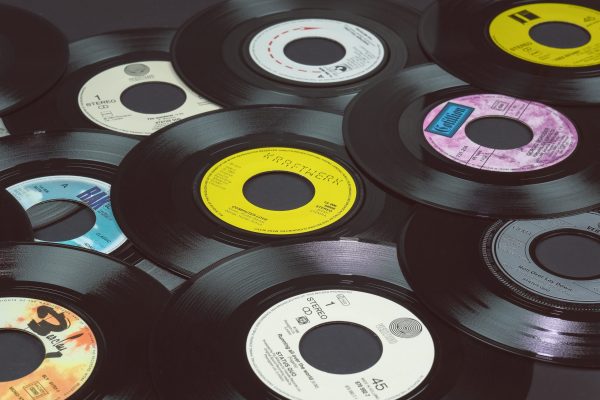
One of the central reasons many pledge their allegiance on the side of 45 rpm records is the sheer fact of their sounding better when the record spins on a record player.
Where the record travels faster, there is inherently more vibrational information within the grooves that can be translated into a higher sound fidelity.
Likewise, the inverse is true for a 33 rpm record, wherein the slower speed means that there is inherently less information being imbibed within the grooves at this speed and thus less to speak of with regards to the audio fidelity.
The real trade off here is one of quality and time. Though a record spun at 45 rpm is going to inherently allow for a higher quality of tone within the record groove, it will also make for a significant lessening of the amount of available space on the surface of the record.
In the case of all records, however, (and something one would know if clued up on how are vinyl records made ) is that ‘fidelity steadily declines as playback progresses; there is more vinyl per second available for fine reproduction of high frequencies at the large-diameter beginning of the groove than exist at the smaller diameters close to the end of the side.
‘At the start of a groove on an LP there are 510 mm of vinyl per second traveling past the stylus while the ending of the groove gives 200–210 mm of vinyl per second — less than half the linear resolution. Distortion towards the end of the side is likely to become more apparent as record wear increases.’
Thus, no matter what speed a record is played at, it is going to fall prey to the same faults in fidelity towards the center of the disc regardless.
Similarly, and inherently related to some of the aforementioned points, is the longevity of a vinyl record as affected by the speed at which it is intended to be played.
Much as with the previous point, the 45 rpm record seems a clear winner. Operating at this higher speed, there is inherently less damage being done to the surface of the disc, for the needle is spending inherently less time scraping its way along the record’s face.
On the inverse, the argument is that with a 33 rpm operating at the slower speed, it encourages the needle to spend more time dragging itself across the record’s face, as well as spending inherently longer spinning out of its packaging in the first place, all of which means that it is not doing the record the best it could.
45 rpm records also play off of the aforementioned phenomenon, wherein a record’s sound quality inherently degrades towards the center owing to the disc shape that it is constructed from. Closer to the center, the record’s circular grooves become smaller and smaller, offering less and less space and prompting the needle to traverse its face faster and faster.
Operating at a faster speed, a record that is intended to be played at 45 rpm will mean that this part of the record – already so prone to degradation in sound fidelity overall – is prevented from degrading even further and at a faster rate, such as it might on the surface of a record intended to be spun at 33 rpm.
And while the actual speed of these records is 33 and a third revolution per minute, that extra fraction of speed is not going to make enough of a difference in terms of slowing down the degradation of the record overall.
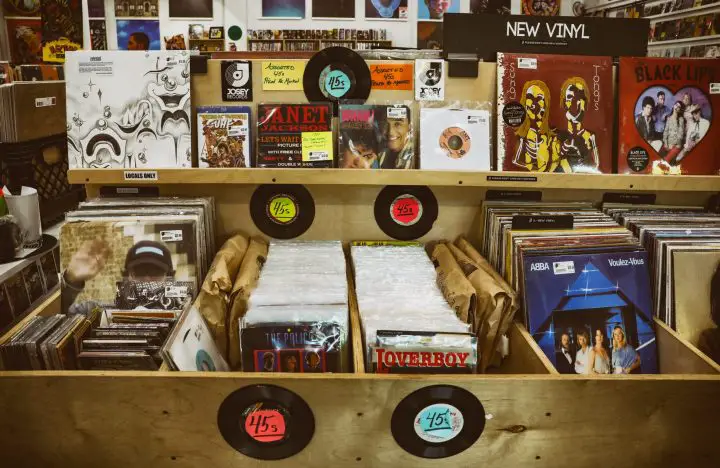
Though it is not necessarily a competition, there are a number of things that a 45 rpm record does better than its 33 rpm counterpart.
The overall quality of the sound within the grooves of a 45 rpm record is inherently better, owing to the phenomenon within record technology which means that a record mastered to be played at a faster speed will at root sound better than a record mastered slower and intended to be played slower.
Likewise, the fact of its being played faster also comes to mean that the degradation of a record that can otherwise not be helped (no matter how delicately one treats it) is slowed down considerably, for the needle that tends to do most of the damage scraping along a record’s surface as it does is spending less time doing so, thus sparing a record’s eventual invalid state for a time longer.
There is, however, a significant trade off with all of these benefits that comes in the form of time. Since a 45 rpm record will be traveling faster, it will be spending less time projecting the music within the grooves forth through the respective stereo system of the user.
Therefore, it will overall be able to hold less music than a record played at 33 rpm. And in an industry where money is increasingly scarce, especially when it comes to any artist actually trying to do something different, this can be a pretty significant deciding factor.
In a similar vein, I imagine that the overload of orders and back logged deliveries that are currently plaguing vinyl pressing plants throughout the western world will play a part in whether a certain record is to be pressed to wax at 33 rpm or 45 rpm.
A slower speed will mean more space to put more music onto one disc, thus saving time and materials in the process. All are factors for consideration.
So, there you have it! Hopefully, this short but sweet journey through some of the key differences between the 33 vs 45 vinyl rpms has been of some use to you in attempting to make sense of all the numbers and characters that have become signpost symbols dotted throughout the world of the record collection.
Perhaps you will try spinning some of your 33 rpm records at 45 rpm to get a flavor of it, or perhaps you will try the inverse and spin your 45 rpm records at 33 rpm for the ultimate vaporwave and chopped ‘n screwed experience.
Are 45 records better than 33?
While there are certainly a whole host of benefits that come along with a record spun at 45 rpm instead of 33 rpm, it would be wrong to say that one is better than the other. For all those benefits, a 33 rpm record can hold a considerable amount more music than a 45 rpm record can, allowing the record plant to essentially put a whole album onto one disc.
What happens if you play a 45 record at 33?
Not a whole lot besides the record sounding kind of funny. There is an inherently novel quality to this kind of thing at first that should be savored at all costs. In fact, I have found a whole host of albums and singles in my record collection that sound rather interesting, if not quite amazing, when played at the wrong speed. This tends to apply far more for slowing down then speeding up, however.
Why are some records 33 and some 45?
The variable speeds at which a record is pressed has to do with a number of factors regarding the actual music itself. This is a physical format, and so the literal amount of space that the music is going to take up on the physical disc is a prime point of consideration when looking to press a release onto wax. Some releases might need more space to fit on a 7 inch or 12 inch disc, in which case they will likely be pressed to be spun at 33 rpm; inversely, a release might need a higher fidelity owing to various aspects of its production, in which case it will be pressed to be spun at 45 rpm.
How do I know if my record is 33, 45 or 78?
Most records will come with directions on the center label regarding what speed they ought to be played at. However, there are a number of records in my own collection, for instance, that seem to take the speed at which they ought to be played for granted. The only way to find out what speed these records ought to be played is by either listening (if you already know the song well enough) or by googling. I have a Kevin Shields remix of ‘Mogwai Fear Satan’ which I had been gifted and thus never really known outside of the vinyl version, and it took me years to realize that I had been listening at the wrong speed the whole time.
Related Articles:
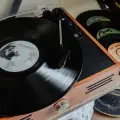
By Robert Halvari
My name is Robert Halvari - audio engineer and a total audiophile. I love vinyl because it has that natural character which brings music to life. I've been using and testing vinyl record players for around 15 years and I'm sharing my love and knowledge of vinyl by publishing all I know at Notes On Vinyl
hi robert, i’m hoping you can help me with a needle problem. I have a GE trimeline 400 solid state record player model t440p. it was my mom’s from the 60’s-70’s. she played 45’s and 33’s. i want to replace the needle but can’t seem to find exact one. the one that’s in it is blue and says GE78 on one side of tab and S-LP on the other. it also has a 12 on the shaft. any help would be appreciated.
Hey there John, thanks for stopping by.
This does seem like a relatively difficult task, especially as this is a model that has not only gone extinct but that was not all that popular at the time. However, it is a beautiful thing that you are wanting to keep using your mother’s equipment in this way and I’m sure it would move her. For more specific help, it might be worth visiting this resource as they really know what they are talking about ( https://needlefinder.net/ ). If this doesn’t work, then your best bet would be to purchase another of these record players online and use the needle on it to replace the needle on the one you already have – make sure the needle works first!
Sorry I can’t be of more assistance but I hope you find what you are looking for,
Leave a comment Cancel reply
Your email address will not be published. Required fields are marked *
Save my name, email, and website in this browser for the next time I comment.

- Rechercher dans :
- Tous les champs
- Artiste + Titre
- Sélectionnez un format :
- Tout format
- Articles en vedette
- Vendeurs en vedette
- Ajoutés récemment
- Moins de 10€
- Vendeurs en promo

33 tours et 45 tours: qu'est ce qui sépare ces deux formats ?
Le 78 tours, entre histoire et nostalgie..
Principal support de diffusion de la musique pendant la première moitié du XXe siècle, le 78 tours contient le plus souvent un morceau par face, soit tout au plus trois minutes de musique sur chaque côté de la galette. Destiné à l'origine à être joué sur un gramophone mécanique, puis sur un tourne-disque à moteur électrique, les premiers 78 tours possèdent la particularité de se lire de l’intérieur vers l’extérieur, contrairement aux 33 tours et 45 tours. Assez épais et pesant largement plus lourd que les formats cités précédemment, le 78 tours mesure la plupart du temps 25 centimètres de diamètre et se distingue des autres formats par son matériau principal : la gomme-laque. Gravé d'un sillon beaucoup plus large que celui des 33 tours et 45 tours, le 78 tours connut son apogée entre 1920 et 1940 puis fut rapidement remplacé par le 33 tours permettant une plus grande capacité de stockage de la musique, ainsi qu'une meilleure résistance à l'usure.
Le 33 tours, support musical de prédilection des années 60 aux années 80
A l'orée des années 50 naquit le 33 tours, support incontesté pour tous les amateurs de musique. Réputé pour être le meilleur rendu du son enregistré en studio, le 33 tours a su séduire le public en lui offrant la possibilité de compiler un album entier sur un seul disque. S'en suivit une véritable révolution dans la manière dont les artistes pensèrent leur musique et leurs compositions, une ère propice à l'originalité et à la création avec l'apparition, par exemple, des fameux concept albums tel que le grandiloquent Dark Side of the Moon des Pink Floyd en 1973 ou encore l'album Tommy, paru en 1969, quatrième disque du groupe The Who. Tournant à une vitesse de 33,5 tours par minute, le LP (de Long Play en anglais) a également su apporter son lot d'améliorations et d'avantages ergonomiques à tous les mélomanes. Bénéficiant généralement d'un diamètre de 30 centimètres, le 33 tours comporte la plupart du temps entre 10 et 12 chansons, pour 23 minutes de son par face au maximum, et remplace le monosillon du 78 tours par un microsillon beaucoup plus fin permettant une meilleure résistance et une amplification sonore optimisée. Délaissé au milieu des années 80 pour le Compact Disc, jugé plus pratique à l'époque, le 33 tours connait une véritable renaissance depuis le milieu des années 2000. Aujourd'hui considéré comme objet de collection, il s'oppose au MP3 grâce à sa très bonne qualité sonore. Le premier 33 tours de l'industrie phonographique fut enregistré en 1945 et pressé trois ans plus tard par Columbia Records. Il s'agit du Concerto pour Violon, op. 64 de Felix Mendelssohn, interprété par le violoniste Nathan Milstein et dirigé par le chef allemand Bruno Walter avec l'Orchestre philharmonique de New York.
Le 45 tours, ou l'avènement du single
En 1949, la société RCA (Radio Corporation of America) lance sur le marché un nouveau type de disque : le 45 tours. Avec une rotation de 45 tours par minute, ce nouveau support permet de stocker huit minutes de musique par face au maximum et sonne l'avènement du single dans le monde de la musique. Permettant aux maisons de disques de tester l'accueil du public d'un nouvel artiste sans se lancer dans la production d'un album complet, le 45 tours change la donne et voit avec son expansion l'éclosion de nombreux musiciens à travers le monde. D'un diamètre de 17 centimètres, il comporte généralement deux chansons, une par face, voire un seul morceau long divisé en deux parties. Largement popularisé par l'utilisation des juke box, le 45 tours connait ensuite plusieurs formats et se développe durant les années 60 avec l'apparition de l'EP (Extended Play en anglais) ou Super 45 tours, permettant de compiler de trois à cinq morceaux en fonction de leur durée sur le même disque.
Au cours des années 70, l'avènement du disco entraine avec lui l'apparition du Maxi 45 tours. Utilisé par les Disc Jockey à travers le monde, le Maxi s'impose comme plus pratique et permet une meilleure restitution du son et un volume sonore plus élevé. Ce format permit aux artistes de proposer plusieurs versions d'un même morceau et d'étendre ainsi leur univers musical. C'est au crooner anglais Perry Como que l'on doit l'enregistrement du premier 45 tours de l'histoire avec la chanson A - You're Adorable en mai 1949.
Pour plus de détails sur les formats, vous pouvez consulter le lexique des collectionneurs. Retrouvez aussi tous nos conseils pour l'achat de CDs d'occasion sur notre site CDandLP !

- Voir plus ...

- Platines vinyles
- Tables de mixage

Quelle est la différence entre un vinyle 33 et un 45 tours ?
On vous a légué une ancienne collection de disques et vous aimeriez un moyen facile de différencier les disques 33 tours des disques 45 tours ?
Pas de panique ! Certains points permettent de distinguer simplement les deux formats mythiques.
- 1.1.1 Comment reconnaître un 33 ou un 45 tours ?
- 1.1.2 Pourquoi appelle-t-on un 33 tours ?
- 1.1.3 Pourquoi appelle-t-on un 45 tours ?
- 1.1.4 Pourquoi les 45 tours ont un grand trou ?
- 1.2 Petite histoire des disques 78 tours, 33 tours et 45 tours
- 1.3.1 Comment reconnaître un disque 78 tours ?
- 1.3.2 L’origine des disques 78 tours
- 1.3.3 Les avantages des disques 78 tours
- 1.3.4 Les inconvénients des disques 78 tours
- 1.4 Qu’est-ce que le RPM ?
- 1.5 En résumé : comment faire la différence entre un 33 et un 45 tours ?
Quelle est la différence entre un 33 et un 45 tours ?
Quelques caractéristiques permettent de faire la différence entre un 33 tours et un 45 tours :
- Le 33 tours mesure environ 30 centimètres de diamètre alors que le 45 ne mesure que 18 centimètres
- Comme son nom l’indique, le 33 tours tourne à une vitesse de 33 tours par minute, alors que le 45 tourne à une vitesse de 45 tours par minute
- Un disque 33 tours peut embarquer 30 à 40 minutes de musique alors qu’un 45 tours permet de lire 10 à 12 minutes maximum
- Le disque 45 tours a une meilleure qualité que le 33 tours
Ces disques sont nés à une époque où l’innovation en matière d’enregistrement faisait d’énormes progrès en seulement quelques années, passant du 78 tours/minute au 33 tours/minute et enfin au 45 tours/minute.
En quoi chacun de ces supports est-il unique ? Et comment ont-ils participé à l’innovation du secteur musical chacun à leur façon ? Découvrez la réponse ci-après !
Comment reconnaître un 33 ou un 45 tours ?
En cas de doute, les vinyles de 30 cm de diamètre (12 pouces ) sont des 33 tours et ceux de 18 cm de diamètre (7 pouces ) sont des 45 tours .
En ce qui concerne la qualité du son, un disque 45 tours a en principe un meilleur son qu’un disque 33 tours .
La vitesse plus élevée du 45 tours implique en effet une plus grande quantité de données lues par seconde, ce qui permet une plus grande richesse sonore. Les hautes fréquences, en particulier, sont plus détaillées.
Pour conclure, plus le nombre de tours par minute est élevé, plus la surface de vinyle passant sous l’aiguille chaque seconde est importante .
On peut faire le parallèle avec le format MP3 : plus le nombre de kbps (kilobytes par seconde) est élevé, plus grande sera la qualité sonore.
On peut voir les sillons du vinyle comme les kilo octets des documents sonores modernes. En parcourant plus de sections chaque seconde, le son est enrichi. Pour continuer le parallèle entre ces différents formats, consultez notre ressource sur pourquoi le vinyle à un meilleur son .
Pourquoi appelle-t-on un 33 tours ?
Le 33 tours s’appelle ainsi car sa vitesse de lecture est de 33 tours par minute.
Avec leurs sillons plus serrés, les disques 33 tours rendirent rapidement les 78 tours démodés. En une seule décennie, les 78 tours ont plongé à seulement 2% des ventes de musique. Le dernier 78 tours a été fabriqué en 1959 aux Etats-Unis.
En 1948, le grand public a connu pour la première fois des disques contenant des albums complets. Des performances scéniques entières pouvaient tenir sur 2 faces d’un disque vinyle.
L’industrie musicale n’est cependant pas passée immédiatement de façon massive aux 33 tours.
Bien que ce nouveau format ait pris la plus grande part du marché, il n’était tout simplement pas nécessaire pour certains usages de passer à des disques d’une durée de 30 ou 40 minutes.
Les juke-boxes, par exemple, préféraient les 78 tours en raison de la lecture d’un seul morceau à la fois. C’est d’ailleurs une des raisons qui a déclenché la création du disque 45 tours, un an seulement après que Columbia ait lancé les 33 tours.
Pourquoi appelle-t-on un 45 tours ?
On dit 45 tours car ce disque tourne à une vitesse de 45 tours par minute.
C’est en mars 1949, dix mois seulement après la sortie du disque 33 tours, que RCA Victor commercialise le disque 45 tours.
Ces disques de 18 cm pouvaient contenir environ 4 à 5 minutes d’enregistrement sur chaque face , ce qui était idéal pour la sortie d’un single.
D’une qualité supérieure à celle des 78 tours , ces disques ont rapidement connu un grand succès commercial, dépassant même les 33 tours.
Dès lors, les acheteurs disposaient de trois options. Tout comme aujourd’hui, beaucoup de personnes se demandaient déjà quelle était la différence entre les disques 33, 45 et 78 tours.
Pourquoi les 45 tours ont un grand trou ?
Il y a deux raisons pour lesquelles les disques 45 tours ont un grand trou :
- Le grand trou au centre permettait au jukebox de lire plus facilement les deux faces du disque . Le jukebox Wurlitzer, le plus utilisé à cette époque, a changé ses standards du 78 tours au 45 tours. Cela a obligé les producteurs de disques à utiliser le système RCA Victor pour diffuser leurs artistes sur les juke-boxes.
- Pour le rendre incompatible avec les systèmes de son dédiés aux 33 tours . À cette époque, les tourne-disques fonctionnaient à 33 ou 45 tours par minute, mais pas aux deux vitesses, c’est une véritable guerre des formats qui est apparue.
Petite histoire des disques 78 tours, 33 tours et 45 tours
Dans les années 1890, les premiers gramophones utilisaient le 78 tours et le matériau du disque était fait de gomme-laque.
En 1948, le disque 33 tours a été créé par Columbia Records . Il s’agissait d’un disque à longue durée (aussi appelé LP pour long play) qui pouvait jouer environ 20 minutes par face.
Le matériau du disque était plus épais et utilisait le matériau vinyle , ce qui le rendait plus stable.
Un an plus tard seulement, en 1949, RCA Victor a sorti le disque 45 tours qui allait à terme s’imposer comme le support vinyle de référence.
La taille réduite et pratique du disque 45 tours le rendait plus facile à stocker et à emporter pour les mélomanes . Des vinyles de différents styles ont également été présentés, ce qui a participé à l’essor des 45 tours.
Pour plus d’informations à ce sujet, n’hésitez pas à consulter notre article sur l’ histoire des disques vinyles .
Quelle est la différence entre un 33 ou 45 tours et un 78 tours ?
Pour faire la différence entre un 33 ou 45 tours et un 78 tours, vous devez savoir que :
- Les 45 sont plus petits en taille , avec un trou plus grand. Ils peuvent inclure quelques minutes d’enregistrement par face (généralement une chanson par face, appelée « singles »). Si votre platine vinyle n’est pas compatible avec ce format, vous pouvez faire l’acquisition d’un adaptateur. A savoir qu’il existe également un format maxi 45 tours qui a été historiquement utilisé par les disc jockeys.
- Les 33 tours sont les disques les plus larges , avec un petit trou. Ils comprennent plus de chansons, c’est pour cela qu’ils sont le format classique des albums dans le commerce.
- Les 78 tours sont plus épais et ne sont pas composés de vinyle (contrairement aux deux autres formats), mais de gomme-laque. Toutes les platines du marché ne sont pas nécessairement compatibles avec ce format, qui demande également un stylet spécifique.
Comment reconnaître un disque 78 tours ?
Les disques 78 tours mesurent 25 cm de diamètre. Ils ne sont pas réellement des vinyles puisqu’ils sont fabriqués en gomme-laque. Ils sont également plus épais et plus rigides que les disques 33 tours et 45 tours.
L’origine des disques 78 tours
L’apparition d’un nouveau support audio découle bien souvent d’une innovation ou d’un besoin. Pourquoi les 78 tours sont apparus ? La réponse ci-après.
C’est en 1890 qu’Emile Berliner a fabriqué un gramophone qui pouvait enregistrer et lire de la musique sur des disques.
Ces disques sont l’équivalent des disques en forme de tube que Thomas Edison a utilisés pour enregistrer sa voix.
En 1910, le 78 tours par minute a commencé à être considéré comme la vitesse standard pour les disques phonographiques.
Comme les 78 tours étaient des disques d’environ 25 centimètres de diamètre, ils ne pouvaient enregistrer qu’environ trois à cinq minutes de musique par face . Cela limitait la quantité pouvant être enregistrée par face.
Le matériau était également plus lourd, avec une forte teneur en substance minérale qui produisait une agitation en surface lorsque les stylets jouaient le disque.
Ces disques étaient également plus rigides , si bien que les laisser tomber entraînait souvent une fissure.
Pendant une cinquantaine d’années, les 78 tours ont été la vitesse d’enregistrement de référence . À cette époque, on ne les appelait pas disques 78 tours, mais simplement disques.
Ce n’est qu’après que Columbia Records ait lancé en 1948 son disque vinyle 33 tours de 30 cm (ou LP pour long play) qu’un autre choix est apparu. Ces nouveaux disques pouvaient contenir une vingtaine de minutes pour chaque face.
Les avantages des disques 78 tours
- La gomme-laque empêche les disques de se tordre
- Ces disques sont fabriqués dans un matériau pratiquement inrayable
- La qualité sonore reste stable dans le temps
- Ces disques résistent bien à l’humidité
Les inconvénients des disques 78 tours
- La qualité sonore de ces disques n’est pas idéale, de sorte que l’on entend des pops et des claquements dans l’enregistrement
- Les disques accumulent la poussière
- Avec quelques instants de musique par face, la plupart des disques 78 tours étaient limités à des singles
- Les disques étant fragiles, ils se brisaient dès qu’on les faisait tomber
Qu’est-ce que le RPM ?
Le Round Per Minute (RPM) signifie tour par minute. C’est une estimation de la fréquence de rotation totale du disque en une minute. En d’autres termes, 1 tour/min signifie que le disque fera un tour complet de 360 degrés en une minute.
Les 45 tours se vendent encore de nos jours. Ils ne sont pas réservés aux seuls collectionneurs de vinyles. On les retrouve dans toutes les catégories de musique. Leur renouveau est d’ailleurs impressionnant.
En résumé : comment faire la différence entre un 33 et un 45 tours ?
Pour différencier un disque 33 tours d’un disque 45 tours, gardez à l’esprit les informations suivantes.
Le disque 33 tours est plus grand que le disque 45. Ensuite, un 33 tours permet d’écouter jusqu’à 40 minutes de musique alors quand un 45 tours ne dépasse en général pas les 10 à 12 minutes. Enfin, le disque 45 tours possède une qualité sonore supérieure à celle du disque 33 tours.
Accueil .:. In English
Soutenir le blog -->
45 ou 33 tours ?
Avant de m’intéresser (un peu) aux disques vinyles, ma conception des disques était simple : 33 tours pour les « grands » disques, 45 tours pour les « petits » disques et 78 tours pour les antiquités. Mais en réalité (traitez-moi d’inculte) c’est un peu plus compliqué que ça. Sans entrer dans les détails, les 78 tours sont anciens et datent d’avant les années 50. Ils contiennent peu de musique – 3 à 5 minutes – et sont très rares actuellement. Les 16 tours (oui, ça existe) demeurent aussi assez rares et contiennent essentiellement des textes, du contenu « parlé » comme une histoire, un livre audio, etc. Descendre à 16 tours par minute permet de stocker plus d’audio mais avec une qualité moindre (suffisante pour de la voix).
En fait, si la norme est d’utiliser une vitesse de 33,5 tours par minutes sur les disques de 12 pouces (30 cm) et 45 tpm sur les disques de 7 pouces (17,5 cm), il ne s’agit pas d’une obligation. Et je me suis rendu compte que si Hooverphonic n’a sorti qu’un seul 7 pouces , certains des disques de 12 pouces sont tout de même des 45 tours. Ces disques ont un nom : Maxi 45 tours. Assez rares tout de même, ils sont pratiques pour le mix et certains assurent que la qualité est meilleure que sur les 33 tours. Etant donné la vitesse de rotation, ils contiennent moins de musique qu’un LP (12 pouces 33 tours) mais ça reste suffisant pour deux ou trois morceaux sur une face.
La vitesse est généralement indiquée sur le disque lui-même mais au pire, ça s’entend facilement en cas d’erreur : un 33 tours lu à 45 tours va être accéléré, et un 45 tours lu à 33 tours va être ralenti.
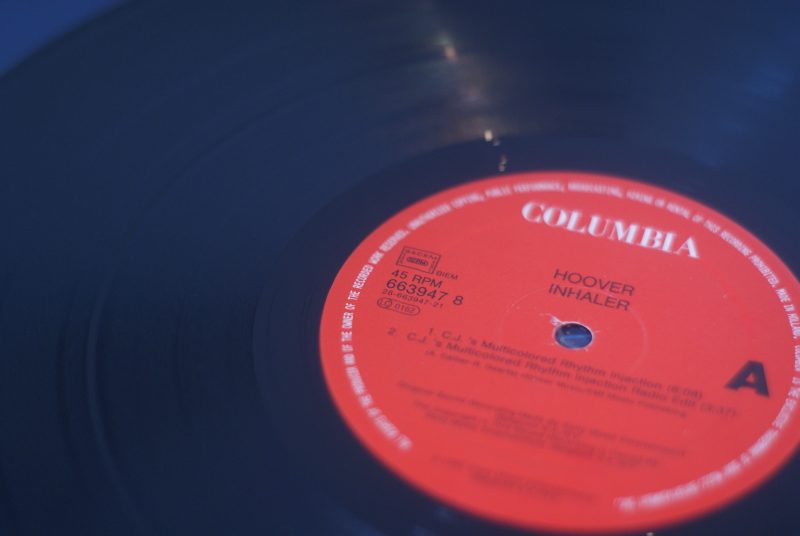
Un 45 tours
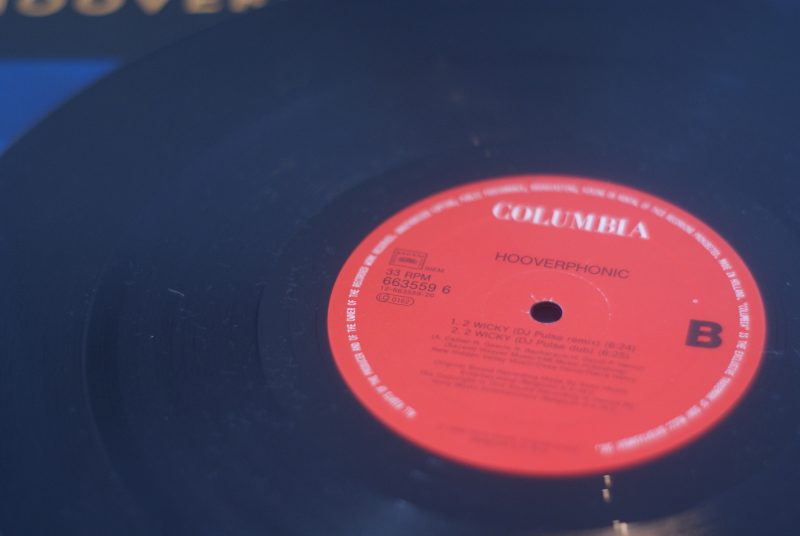
Un 33 tours
Vous pouvez soutenir le blog sur Patreon . Votre participation permet de faire vivre le site en finançant l'hébergement et le matériel qui est testé.

10 commentaires
Ah tiens, c’est amusant, j’ai eu la même surprise d’inculte dans l’autre sens avec le vinyle 7″ de « Mercy Street » (Fever Ray) récemment. Celui-ci a en plus la particularité vicieuse d’avoir une face A en 33 tours et une face B en 45 tours. Voici le vinyle en question : http://tof.canardpc.com/view/8bb30d50-7461-4414-96dc-3547d8c9a331.jpg
Fidèle lecteur du journaldulapin et n’ayant que des « Maxis » à la maison ..je suis surpris que vous découvriez ça. Mais bon.. on en découvre tous les jours.. ! Je vous conseille de lire l’histoire de tom moulton qui a inventé l’EP 12inch ou Maxi 45 Tours en français ou encore la mixtape (musique enchainée).
Ce format est privilégié pour tous les styles ayant de prêt ou de loin un rapport avec la discothèque (funk,disco, rap, house etc…). Le maxi a globalement un meilleur son. Il est objet de collection. Il est aussi le format « star » car c’est en maxi qu’on trouve tout ce qu’on veux. Beaucoup de titres n’existent qu’en Maxi. On trouvera les version longues, remix, bootlegs, test pressing, versions pirates etc…
Pochette du maxi de New Order – Blue Monday futuriste à l’époque. http://www.inside-rock.fr/IMG/jpg/BlueMonday12-2.jpg
certains assurent que la qualité est meilleure que sur les 33 tours
La densité d’information contenue dans un maxi 45 est plus faible que dans 33 tours / 30 cm, donc la qualité est meilleure. C’est un peu comme les kbps d’un mp3.
— les 78 tours sont anciens et datent d’avant les années 50[….] – et sont très rares actuellement
A voir les piles gigantesques qui squattent les brocantes, je ne demande dans quelle contrée tu habites. :-)
j’avais lu un article qui en dis pas mal sur le sujet. il est ici : http://www.cuk.ch/articles/17876 Faut lire aussi les commentaires ! un exemple : plus ça descend bas dans le grave et plus le sillon est large donc moins de minutes sur le disque d’où parfois le choix d’un maxi 45 au moment du pressage ? ps : mon premier maxi 45, c’était la B.O. de Ghostbuster =))
ou encore : Certaines des instructions peuvent être ignorées. Par exemple celles liées à un problème inhérent au disque noir, l’augmentation de la distorsion sonore vers le centre : plus la pointe de lecture se rapproche du centre, plus la vitesse diminue et plus les informations sont comprimées. Pour corriger ce phénomène, les techniciens ajoutaient parfois des hautes fréquences à la fin du disque. Ce procédé, appelé « compensation du rayon », est évidemment devenu inutile maintenant.
Bon… y’a personne ? c’est mort ? mon lien est nul ?
C’est intéressant, mais j’ai pas grand chose à dire dessus (à part merci, certes)
la norme = 33,33
Les commentaires
Votre adresse ne sera pas publiée.
Commentaire
Adresse e-mail *
Site web ou blog
- Rechercher sur Le journal du lapin

--- /// Bons Plans /// ---
• Des trucs Hue en promotion . • Plusieurs produits Logitech en promotion .
- ADB AirPort Apple TV Apple Watch Bluetooth Bêta Clavier Data Record DVD Easter Egg Ethernet GPU iMac iOS iOS 4 iPad iPhone iPod iPod touch iTunes Karotz Lion MacBook Air MacBook Pro Macintosh Mac OS Mac OS X Mac Pro Manette Mavericks Mountain Lion Nabaztag Pippin PowerBook Power Mac G3 Prototype Raspberry Pi Safari Snow Leopard Souris SSD Thunderbolt Wi-Fi Windows Yosemite
You are using an outdated browser. Please upgrade your browser .
- Moscow Tours
Our 20 Best Moscow Tours of 2022
Join us on an unforgettable tour to Moscow, the capital of Russia. Imagine visiting Red Square, St. Basil’s the Kremlin and more. Moscow is one of Europe’s most vibrant cities and one of Russia’s most historical. All of our tours to Moscow are fully customizable and can be adjusted to fit any budget. Our most popular tours are listed below. Please click on the tour details to learn more or contact us for more information about our Moscow tours using the form at the side of the page. You can also schedule a call with one of our Russian travel specialists to learn more.

Classic Moscow
This is our most popular Moscow tour that includes all the most prominent sights. You will become acquainted with ancient Russia in the Kremlin, admire Russian art in the Tretyakov Gallery, listen to street musicians as you stroll along the Old Arbat street, and learn about Soviet times on the Moscow Metro tour.
Accommodation
PRIVATE TOUR

A Week in Moscow
This tour is a perfect choice for those who wish to get to know Moscow in depth. One of the highlights of this package is the KGB history tour which gives an interesting perspective on the Cold War. You will also have time for exploring the city on your own or doing extra sightseeing.

Weekend in Moscow
This tour is a great way to get acquainted with the capital of Russia if you are short of time. You will see all the main attractions of the city, the most important of which is the Kremlin - the heart of Russia. The tour starts on Friday and can be combined with a business trip.

Group Tour Moscow Break by Intourist
Russia's capital has so much to offer, from the Kremlin and the Metro to the Old Arbat street and the Tretyakov Gallery. Besides these sites, you will also visit a fascinating country estate which today is quite off the beaten path, Gorky Estate, where the Soviet leader Lenin spent the last months of his life.

Kolomenskoye Tour with transport
The history of Kolomenskoye stretches back for centuries. In 1380, Dmitri Donskoi’s army passed through Kolomenskoye on their way to the Kulikovo battlefield, and it was...
Tours by car
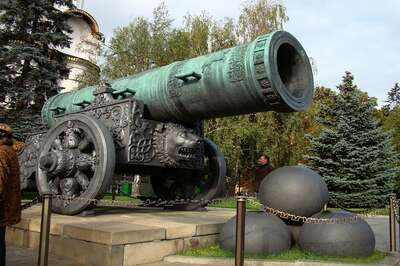
Kremlin, Red Sq., Cathedrals & Armory Tour
The Kremlin is truly a fascinating structure, at the same time it is an ancient tower, the city’s former military fortification, a palace, an armory, the sovereign treasury...
Walking tours

Kremlin, Red Sq., Cathedrals, Armory, Diamond Fund Tour

Old Arbat walking tour
You will be told of the street’s interesting history and view the street’s artisan culture. You will also have the opportunity to view and purchase souvenirs from the...

Tour to Sergiev Posad with transport
Considered by some to be the Russian Vatican, Sergiev Posad is the temporary residence of the Patriarch of the Russian Orthodox Church. The Trinity St. Sergius Monastery (Lavra)...

Tour to Kuskovo with transport
The Kuskovo Estate often called the Moscow Versailles due to its perfectly preserved French park, is an example of an 18th century, luxurious Moscow summer residence. Its history...

Tour to Tsaritsyno with transport
The Tsaritsyno Estate is located in the southern part of Moscow. The estate was constructed for Catherine the Great by the Russian architects Bazhenov and Kazakov in a romantic...

Moscow Metro and Old Arbat Tour
The Moscow Metro is one of the largest and most grandly built metro systems in the world. It was meant to be a showcase of the Soviet Union’s achievements for both the Russians...
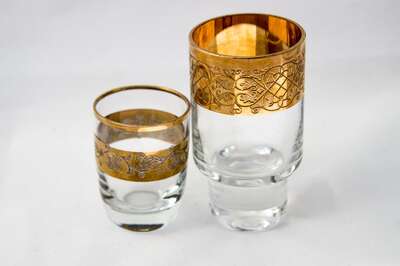
Vodka Museum Tour with transport (excursion and vodka tasting)
Vodka is an important component of Russian life, an element of national identity and everyday culture. We invite you to visit the Vodka Museum and feel the atmosphere of long-gone...

Mikhail Bulgakov Apartment Museum
This apartment museum located close to Patriarch Ponds became the prototype of the "bad apartment" described in the novel "The Master and Margarita." Currently the museum's...

Kremlin, Red Sq., Cathedrals & Diamond Fund Tour

The State Museum of Lev Tolstoy Tour
Take this opportunity to learn more about the Russian writer Lev Tolstoy. During the visit to the museum you will see part of a vast collection of exhibits connected to Tolstoy...

Novodevichy Convent Tour with transport
Tour of the Novodevichy Monastery. Founded in 1524 by Grand Prince VasiliIoanovich, the original convent was enclosed by fortified walls and contained 12 towers. The structure...

City Tour with Visit to St. Basils & Red Sq. with transport
Panoramic City Tour. This Moscow tour is a great start to your trip and the best way to get acquainted with many of the city’s major highlights. Our professional guide will...

City Tour of Moscow
Head to the heart of Moscow with a professional guide on a 4-hour private walk through the city center. See Tverskaya and Old Arbat streets, Theatre Square with the world-famous...

Moscow Metro walking tour

Kremlin, Red Square and Cathedrals Tour

KGB Tour with transport
This is a very interesting and insightful tour. You will visit places connected with Stalin’s terror - a time of great repression and fear. You will be shown monuments to...

Soviet and Post-Soviet Moscow Tour
The tour begins with a drive or walk down Tverskaya Street – a Soviet masterpiece. In the years of Soviet power, Tverskaya began to undergo a transformation: it was widened...

Tretyakov State Gallery Tour
This world-famous gallery contains masterpieces of Russian art beginning in the 10th century up until today. You will view exquisite Russian icons and paintings from the 18th and...
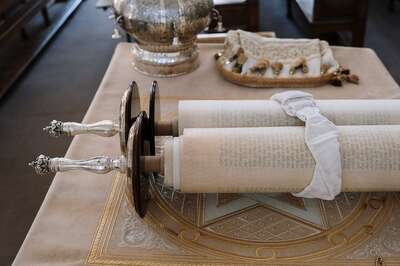
Jewish Heritage of Moscow Tour
This tour offers a detailed look into the history and present-day life of the Jewish community of Moscow. On the tour, you will visit sites connected with the cultural and religious...

Vodka Museum Tour with transport (excursion only)

Lena, our guide in Moscow was excellent. She was very knowledgable and could answer any question we had for her. We liked that she could pick up on our interests and take us places we might not have thought of to go. When we realized that one of the places we had chosen to see would probably not be that interesting to us, she was able to arrange entry to the Diamond Fund and the Armoury for us. Riding the Metro with Lena was a real adventure and a lot of fun. In Saint Petersburg we found Anna well versed in the history of the Tsars and in the Hermitage collection. Arkady in Veliky Novgorod was a very good guide and answered all of our questions with ease. Novgorod was perhaps a long way to go for a day trip, but we did enjoy it. Vasily was a great driver to have and kept us safe with good humour and skill. We enjoyed ourselves so much, my daughter says she is already planning to return. We would both have no hesistation to recommend ExpresstoRussia to anyone we know.
Just wanted to let you know that My grandson Bruno and I couldn´t have been more pleased with our week in Moscow (6/15 - 6/21). We were absolutely enchanted with the whole experience, including getting lost a couple of times in the Metro during our free time. Although both our guides (both Eleanas) were excellent, I would particularly commend the first one (she took us to the Tatiakov, the KGB tour, and to that beautiful cemetery where so many great Russian artists, authors, composers, musicians, militarists, and politicians are buried). Her knowledge is encyclopedic; and her understanding of today´s Russia as a product of its past was, for us, truly enlightening. I will be taking another tour in Russia, with my wife, within the next two or three years. I will be in touch with you when the time comes. Meanwhile, I will refer you to other potential visitors to Russia as I meet them.
Tours to Moscow
Our Moscow tours are land only meaning that you arrange your own air travel to Russia and our expert staff meets you at the airport and handles everything else from there. Our online Airline Ticket booking system offers some of the most competitive rates to Russia available on the web so if you need tickets, please visit our Russian air ticket center . Rest assured that you will be taken great care of on one of our Moscow tours. Express to Russia has a fully staffed office in Moscow that will help to make your visit fun, informative and unforgettable. Please remember that of all these tours are private and can be adjusted to your taste. You can add, replace or skip some sights; you can add more days to the package or cut the tour short. Our specialists will be glad to help you create the tour of your dreams!

Moscow, a City Like No Other
Moscow is Russia’s largest city with a population of between 12 and 13 million. It is also Europe’s largest city and when you visit Moscow, you can feel it. The layout and architecture of the city is eclectic, ranging from crooked, ancient streets and alleyways to wide, bustling boulevards, from medieval churches to Stalin skyscrapers and to modern, glass buildings towering over everything and of course in the center of it all is the Kremlin and the magnificent Red Square. Moscow is also home to a fantastic, efficient and very beautiful metro system – each station having its own special design. In fact, Express to Russia’s Moscow metro tours and excursions are some of our most popular attractions that we offer. On our Moscow tours, you will see this and more.

Moscow Tours centering on Russian History
Moscow has a long and interesting history and has been the capital of Russia in many of its different iterations – capital of the Grand Duchy of Moscow , the Russian Empire and of course the Soviet Union (who could ever forget the Soviet Union?). Moscow, was founded in the 12th century by Prince Yuri Dolgaruki (Yuri of the long arms – he really did have long arms!). From that time on, it was home to the Russian Tsars until Peter the Great moved the capital to St. Petersburg in 1703. The city has survived invasions and sieges from the Mongols, the Tartars, the Poles, Lithuanians and Napoleon but has always persevered. Our Moscow tours will enlighten you on this great history and give you insights into Muscovites and their unique culture. Our Moscow tours show you what the city is like today but also brings to life the past. Moscow never seems to sleep and is bursting with energy. A Moscow tour with Express to Russia is truly the best way of getting to know Russia’s largest and most vibrant city.
Frequently Asked Questions From Our Travelers
What is the best time to visit moscow.
Any time of year is fine depending on what you plan to do. Summertime is pleasantly warm, ideal for exploring the city and its vibrant atmosphere, but Moscow will be much busier and accommodation is more expensive. Winter can be quite cold but beautiful nonetheless, and this is unproblematic if you intend to spend most of your trip in museums and galleries. There are also various festivals and events organised throughout the year. For more information about the best time to visit, read our guide
How many days are enough in Moscow?
If you plan your itinerary strategically and aren’t averse to a packed schedule, you can cover Moscow’s main sights over a long weekend. Most popular attractions are in the city centre, and the Moscow Metro allows you to cover much ground in a small amount of time. Ensure that your accommodation is fairly central and book tickets in advance, so that you can make the most of your days. For an informative and well-organised day out, check out our Moscow day tours with options to suit all interests.
Do they speak English in Moscow?
As Russia’s capital city, tourists are well accommodated in Moscow. There should be English-speaking staff in restaurants, bars, hotels, shops and attractions in tourist hotspots, and there are also English-speaking tourist police. Transport services have English translations on their maps and English announcements via intercom; alternatively, order taxis from the Yandex Taxi app (Russian Uber), though it’s unlikely that your taxi driver will speak English. If you get stuck and cannot communicate, it’s fine to use Google Translate.
Is it safe to travel to Moscow?
It is no less safe to travel to Moscow than to any European city if you exercise common sense and look after your belongings. As with every city some regions can be more unsavoury than others, but no tourist attractions are located there. The traffic in Moscow is notorious, so exercise caution when crossing roads. Do not take unlicensed taxis; book in advance or take public transport, which is widespread and perfectly safe. If you encounter any problems, look for the special tourist police who can help you. For more information, read our guide about staying safe in Russia .
Our travel brands include

Express to Russia
Join us on Facebook
We invite you to become a fan of our company on Facebook and read Russian news and travel stories. To become a fan, click here .
Join our own Russian Travel, Culture and Literature Club on Facebook. The club was created to be a place for everyone with an interest in Russia to get to know each other and share experiences, stories, pictures and advice. To join our club, please follow this link .
We use cookies to improve your experience on our Website, and to facilitate providing you with services available through our Website. To opt out of non-essential cookies, please click here . By continuing to use our Website, you accept our use of cookies, the terms of our Privacy Policy and Terms of Service . I agree
Destination guides
Download free Russia travel guides
- St Petersburg
- Golden Ring
- Lake Baikal
- Murmansk (Kola Peninsula)
- Moscow & St Petersburg
- Russia River Cruises
- Expedition Cruises
- Trans-Siberian Tours
- Northern Lights Tours
- Siberia Tours
- Winter Tours
- Students Trips
- Luxury Tours
- Plan My Tour
Start planning my tour
Your Russia, your dates, your mates
- Destination Guides
- Russia Travel Tips
- Russian Visa
- Travel Insurance
- Why 56th Parallel
- Traveller Reviews
Moscow Vibes – Three Day City Escape
Duration 3 days
Price from USD $730 ? Currency Conversion Converted from USD based on the latest exchange rate. Final amount and payment will be in USD. Final conversion rate is determined by your bank.
Trip Style Sightseeing
Time of year All Year
Home / Moscow Tours / Moscow Vibes – Three Day City Escape
- Dates & Prices
This short Moscow tour will give you a true taste of the history, culture and incomparable urban vibe that define one of the world’s largest metropolises. In just three days, this Moscow itinerary takes in all the most iconic sights of this attraction-packed destination. After two and half days getting acquainted with the city, we’ve set time aside for you to explore Moscow your way and discover your own favourite hang-outs in a city overflowing with hidden treasures
3-Day Moscow Tour Highlights:
- Panoramic Tour of Moscow: See Moscow beyond the postcard images on a private excursion by car through the city streets including a drive along the banks of the Moskva River. Visit the famous Bolshoi Theatre, pass by Gorky Park and the Novodevichy Convent, and admire the city from on high at the Sparrow Hill observation platform.
- Moscow Historical City Centre Guided Walking Tour : Immerse yourself in the atmosphere of one of the world’s biggest metropolises and discover local haunts on foot, including the Red Square, the Kremlin and the multi-coloured domes of St Basil’s Cathedral.
- Armory Chamber tour: Explore the endless treasures of this unique museum, displaying the wealth accumulated by Russian rulers from the 12th century until the October Revolution of 1917. Walking through the exhibition halls is a journey through the centuries.
- Moscow Metro Tour : Go deep underground on a subway tour of the famous Moscow metro. The world’s deepest metro system is renowned for its palatial, art-adorned stations, complete with marble columns and chandeliers.
On your first day, you’ll be treated to a panoramic, drive-by tour of Moscow to get a feel for the immense scale of one of the world’s most rapidly developing urban centres. The city’s history unfolds in real-time as you pass lavish imperial mansions, solemn Soviet structures and luxurious modern shopping centres.
Day two kicks off exploring Moscow’s historic centre on foot, followed by a tour of the Kremlin, the seat of Russian power and political intrigue for centuries. Stand in the Red Square, surrounded by the stunning architecture as you hear stories of the people and events behind many of Moscow’s most iconic landmarks.
On your final day, we’ll head beneath the city for a tour of the Moscow Metro and its famously ornate underground stations. Art lovers should hit up one of Moscow’s many world-class galleries such as the Tretyakov State Gallery, the Pushkin Museum or Garage, Moscow’s cutting-edge contemporary art museum. History fans can follow a Soviet trail through the city including Stalin’s Bunker, while those seeking a more indulgent experience can browse trendy neighbourhoods like Kitay Gorod or shop for everything from fashion to kitsch souvenirs at the enchanting Izmaylovo Flea Market. Foodies can head to one of the countless speciality stores sampling vodka, caviar and chocolate.
If you only have a few days to spend in Moscow, this tour will ensure you make the most of your time in the city. Let the experts navigate you through this complex and occasionally overwhelming capital, giving you plenty of time to soak up the city’s most unmissable attractions.
Accomodation
Not Included
Sightseeing
Action rating ?
Type of tour
3 days / 2 nights
Private - Any Date

Day 1 Panoramic city tour
Welcome to the glorious capital of Russia, Moscow! You’ll be met by your driver at the airport and taken to your centrally located hotel.
After check-in and rest, meet your private guide at the hotel lobby for a comprehensive tour of Moscow by car. Visit the starkly contrasting Theatre Square to see the stunning Bolshoi Theatre, pass Tverskaya Street, the city’s main boulevard and home to the landmark Yeleseyevskiy Grocery Store.
You’ll enjoy a panoramic drive along the Moskva River, where a huge, controversial state of Peter the Great was erected. Pass by the legendary Gorky Park and the White House before a stop at the architecturally stunning Novodevichy Convent, and the observation platform at Sparrow Hills, for a bird’s eye view over this staggering megalopolis.
Day 2 Red Square and Kremlin
After breakfast at the hotel, your guide will take you on a walking tour of the historical city centre. Stroll through the Red Square, the hub of cultural life in Moscow, with its elaborate ‘stone flower’ fountain and fantasy-like St Basil’s Cathedral – a postcard-perfect symbol of the nation. Admire the grandiose façade of GUM, the city’s most luxurious shopping centre, and visit Alexander’s Garden, with its eternal flame and the chance to watch a changing of the guards.
Break for lunch before continuing on a tour of the Kremlin and Armoury Chamber, famous of its collection of tsarist fashion, with regalia such as jewel-encrusted crowns, orbs and sceptres as well as arms and armour, exotic gifts from the leaders of faraway lands, and an illustrious case of Imperial Faberge eggs.
As an option* spend an evening on a sumptuous dinner cruise, taking in the stunning sights and city lights of this mesmerising metropolis by night.
Day 3 Metro and Arbat Street
Start a day with a tour of Metro, stopping on the way to marvel at some of the most elaborately decorated stations of the world-famous Moscow subway system. Take a stroll along Old Arbat street - the most famous street in Moscow. Through the centuries Arbat used to be one of the most bohemian places in Moscow. Today Arbat is a promenade full of small cozy cafes and street life.
The afternoon is free for you to either enjoy the rest of the day on your own or choose among optional excursions to explore more of Moscow. Visit the Tretyakov Gallery or Pushkin State Museum to admire Russian art. Join locals for a stroll at the Gorky or VDNH park.
Visit beautiful Kolomeskoye Estate or Izmailovo Kremlin, or spend a day exploring the beautiful city of the Golden Ring (Russian province) - Sergiev Posad. In the evening you will be transferred to the airport for your departure to your next destination.

Print this page
Save a printed version of this tour, so you can make a decision later

Send to my inbox
Email yourself or a friend the link for this tour

Ask a question
Have a question about this tour? Our experts will be happy to help
Group airport/train-station arrival and departure transfers
All transportation according to the itinerary with a private driver
4* hotel accommodation in the historical city center (twin/double)
Local licensed English-speaking guide
All activities, indicated in the itinerary, except optional
Entry fees according to the itinerary (skip-the-lines policy)
Russian visa support document
Travel insurance
Russian visa and visa fees. Russian visa can be arranged by 56th Parallel for an additional cost (for Australian citizens only). Apply for concierge visa service here .
Optional excursions/activities
*Private tour. Price is per person, based on min 2 people
Similar tours
Highlights of moscow & st petersburg.
Immerse yourself in the art, history and culture of Russia and explore the contrasting styles of Moscow and St Petersburg in just one week. Experience the iconic landmarks of ...
Golden Ring at a Glance
Take a short detour from Moscow to discover the age-old allure of Russia. Travelling from the capital to the countryside, where golden spires and the onion-shaped domes of ...
Treasures of St Petersburg
This in-depth tour is a fun and fascinating discovery of the legacy of Imperialist Russia, just in one week. A showcase for the wealth and tastes of the Emperors of Russia from ...
Classic Moscow – Art, History and Culture
Breathe in the history of Moscow, explore its Imperial and soviet past, dynamic contemporary culture and lifestyle. On this 5-day tour of Moscow, you'll visit the must-see sights ...
Why travel to Russia with 56th Parallel?
Destination Specialists
Our team offers over 18 years of experience travelling and planning travel in Russia. Delivering outstanding travel experiences in Russia’s capitals and in some of the most stunning & remote locations takes experience, special access and the right connections. We make sure that all the fine details are handled perfectly so you can enjoy your Russia travel experience.
Group & Private Tours
The choice to join a small group on a guaranteed departure or chose to travel on your own dates with your own mates. Each destination we travel to in Russia offers an option between private tours and small group tours. Please note: on our adventure tours in remote destinations, we mostly run group tours to keep the cost down.

Bonded & Licensed
56th Parallel is a fully licensed, insured and accredited travel provider.

From USD $730
Day 1: Panoramic city tour
Day 2: red square and kremlin, day 3: metro and arbat street, not included, start planning your tour.
A destination specialist will follow up on you enquiry shortly. Prefer to chat? Call us on +61 412 587 785 we will be delighted to be of service.
Email this tour to:
Have a question or need specific information.
Send us a note below or call us
Country * Afghanistan Albania Algeria American Samoa Andorra Angola Anguilla Antarctica Antigua and Barbuda Argentina Armenia Aruba Australia Austria Azerbaijan Bahamas Bahrain Bangladesh Barbados Belarus Belgium Belize Benin Bermuda Bhutan Bolivia Bosnia and Herzegowina Botswana Bouvet Island Brazil British Indian Ocean Territory Brunei Darussalam Bulgaria Burkina Faso Burundi Cambodia Cameroon Canada Cape Verde Cayman Islands Central African Republic Chad Chile China Christmas Island Cocos (Keeling) Islands Colombia Comoros Congo Congo, the Democratic Republic of the Cook Islands Costa Rica Cote d'Ivoire Croatia (Hrvatska) Cuba Cyprus Czech Republic Denmark Djibouti Dominica Dominican Republic East Timor Ecuador Egypt El Salvador Equatorial Guinea Eritrea Estonia Ethiopia Falkland Islands (Malvinas) Faroe Islands Fiji Finland France France Metropolitan French Guiana French Polynesia French Southern Territories Gabon Gambia Georgia Germany Ghana Gibraltar Greece Greenland Grenada Guadeloupe Guam Guatemala Guinea Guinea-Bissau Guyana Haiti Heard and Mc Donald Islands Holy See (Vatican City State) Honduras Hong Kong Hungary Iceland India Indonesia Iran (Islamic Republic of) Iraq Ireland Israel Italy Jamaica Japan Jordan Kazakhstan Kenya Kiribati Korea, Democratic People's Republic of Korea, Republic of Kuwait Kyrgyzstan Lao, People's Democratic Republic Latvia Lebanon Lesotho Liberia Libyan Arab Jamahiriya Liechtenstein Lithuania Luxembourg Macau Macedonia, The Former Yugoslav Republic of Madagascar Malawi Malaysia Maldives Mali Malta Marshall Islands Martinique Mauritania Mauritius Mayotte Mexico Micronesia, Federated States of Moldova, Republic of Monaco Mongolia Montserrat Morocco Mozambique Myanmar Namibia Nauru Nepal Netherlands Netherlands Antilles New Caledonia New Zealand Nicaragua Niger Nigeria Niue Norfolk Island Northern Mariana Islands Norway Oman Pakistan Palau Panama Papua New Guinea Paraguay Peru Philippines Pitcairn Poland Portugal Puerto Rico Qatar Reunion Romania Russian Federation Rwanda Saint Kitts and Nevis Saint Lucia Saint Vincent and the Grenadines Samoa San Marino Sao Tome and Principe Saudi Arabia Senegal Seychelles Sierra Leone Singapore Slovakia (Slovak Republic) Slovenia Solomon Islands Somalia South Africa South Georgia and the South Sandwich Islands Spain Sri Lanka St. Helena St. Pierre and Miquelon Sudan Suriname Svalbard and Jan Mayen Islands Swaziland Sweden Switzerland Syrian Arab Republic Taiwan, Province of China Tajikistan Tanzania, United Republic of Thailand Togo Tokelau Tonga Trinidad and Tobago Tunisia Turkey Turkmenistan Turks and Caicos Islands Tuvalu Uganda Ukraine United Arab Emirates United Kingdom United States United States Minor Outlying Islands Uruguay Uzbekistan Vanuatu Venezuela Vietnam Virgin Islands (British) Virgin Islands (U.S.) Wallis and Futuna Islands Western Sahara Yemen Yugoslavia Zambia Zimbabwe
If you have any urgent questions or enquiries, please give us a call +61 412 587 785

IMAGES
VIDEO
COMMENTS
Conclusion. En résumé, les 33 tours sont plus grands et se jouent à une vitesse plus lente, les 45 tours sont plus petits et se jouent à une vitesse plus rapide, et les 78 tours sont le type de disque vinyle le plus ancien. Ils sont tous utilisés pour différents types de musique. Si vous débutez, les disques 33 tours sont la solution.
Les disques 78 tours ont une vitesse de rotation plus élevée que les disques 33 et 45 tours. Les 78 tours ont des sillons plus larges que les disques vinyles, ce qui signifie que le stylet doit également être plus large. Les disques 78 tours sont mono et ne sont entendus que par un seul canal. Les maisons de disques ne fabriquent plus de 78 ...
1901 - 10-inch 78rpm disc record is made from shellac. 1910 - 78rpm becomes the standardized speed for all records. 1925 - Electrical recording takes over acoustic recording. 1948 - 33rpm LPs are released by Columbia Records made of vinyl. 1949 - 45rpm records released. Consumers now have three standard speed options.
In simple words, these numbers refer to the rotational lp speed. The rotational speed determines how long each side of the record is. So, a 33 vinyl record is played at 33 revolutions per minute (rpm), a 45 vinyl record is played at 45 RPM, and a 78 vinyl record is played at 78 RPM.
33, 45, and 78 RPM is the speed at which the most common commercially available vinyl records spin at represented in revolutions per minute. The records themselves are often referred to by their speed. As an example, a 7" single featuring a single song is often referred to simply as "a 45", or a shellac disc is often called a "78".
A 45 spins faster, 45 times per minute, roughly 0.75s per rotation. Three speeds are commonly used (33⅓, 45, and 78) when making records. 33⅓ and 45 rpm records are the most popular choices today, and 78 is more of an old-fashioned format, which is no longer being produced. (Note - not all record players can play at 78 rpm.
Differences in Sound Quality. The rotational speed of a vinyl record directly impacts its sound quality. Generally, higher rotational speeds, such as 45 RPM and 78 RPM, offer better audio fidelity and reduced surface noise compared to 33 RPM records. However, the overall sound quality also depends on factors like mastering, pressing quality ...
LP = Long Play: album 33 tours ou 12 pouces. Autre format, autre technologie, le 78 tours. Les 78 tours, plus anciens ne font pas partie de la même catégorie que les 33 tours et les 45 tours. Ils relèvent de la technologie du sillon standard alors que les 33 et 45 tours font partie de la famille des microsillons. Les microsillons, comme leur ...
45 tours vs 33 tours : single vs album. Un an plus tard, on invente le 45 tours. Ce disque est conçu pour concurrencer le 33 tours : il coûte moins d'1 dollar. Mais le 45 tours a des limites : il ne peut contenir qu'une seule chanson de 5 minutes par face. C'est la naissance du single.
At 45 RPM: 7-inch records at a 45 RPM speed are incredibly common and are the standard go-to when it comes to 45 RPM records; At 33 RPM: 7-inch records at 33 RPM are much less common when compared to those at 45 RPM. These are rarely in circulation and are very rare to find. 10-inch Vinyl Records. At 78 RPM: 10-inch records are innately rare ...
33 rpm, 45 rpm, EP, 12-inch, Lp, Single ??...You are stepping into the vinyl record universe and you are puzzled by the different names you hear. ... 7-inch stands for a vinyl with a diameter of 17,78 centimeters. ... The Maxi-Single (Maxi-45 tours or Maxi in France) is a large size 12-inch (30 cm) vinyl record. Its listening time is about 10 ...
The most significant difference between the two was in their size. The 45 was smaller than the 33; it was a 7-inch record, while the 33 was 10 or 12. They also varied in speed - the 33 was slower than the 45. 45 records were more popular than the 33s because of LPs.
Size. One of the central differences between 33 vs 45 vinyl rpm is the respective sizes of these kinds of vinyl record speeds. Generally, a record played at 33 rpm will be larger than a record intended to be played at 45 rpm. A record played at 33 rpm will tend to be around 12 inches, in fact. This harkens back to the early days of vinyl ...
Quelle est la différence entre les disques 33 45 et 78 tours ?Si vous souhaitez devenir collectionneur de disques en vinyle, vous avez peut-être remarqué que...
Assez épais et pesant largement plus lourd que les formats cités précédemment, le 78 tours mesure la plupart du temps 25 centimètres de diamètre et se distingue des autres formats par son matériau principal : la gomme-laque. Gravé d'un sillon beaucoup plus large que celui des 33 tours et 45 tours, le 78 tours connut son apogée entre ...
Dans cette vidéo je vous montre LES 33, 45 ET 78 TOURS !ABONNEZ-VOUS ET LIKEZ !https://www.youtube.com/channel/UCTjbrRQuy2PcDQ1WlkHJe6gSi vous voulez du cont...
Petite histoire des disques 78 tours, 33 tours et 45 tours . Dans les années 1890, les premiers gramophones utilisaient le 78 tours et le matériau du disque était fait de gomme-laque. En 1948, le disque 33 tours a été créé par Columbia Records. Il s'agissait d'un disque à longue durée (aussi appelé LP pour long play) qui pouvait ...
Records come in three speeds: 33 1/3 rpm (sometimes abbreviated to just 33 rpm), 45 rpm and 78 rpm. RPM stands for Revolutions Per Minute. Records come in ...
Ces disques ont un nom : Maxi 45 tours. Assez rares tout de même, ils sont pratiques pour le mix et certains assurent que la qualité est meilleure que sur les 33 tours. Etant donné la vitesse de rotation, ils contiennent moins de musique qu'un LP (12 pouces 33 tours) mais ça reste suffisant pour deux ou trois morceaux sur une face. La ...
The fastest and most reliable way to see the best sights of Moscow. Red Square, St Basil's Cathedral, Sparrow Hills, the Bolshoi Theatre, Christ the Saviour Cathedral, Tverskaya Street, Kremlin and other popular attractions. BOOK NOW. For all. 3,5 - 4 h.
Price from 146,25. View tour. Five Day Moscow Tour. 5. 5 days / 4 nights. Personal arrival and departure transfers. Guide speaking your language (English, German, French, Spanish) Private car. Entrance tickets to museums.
This tour is a perfect choice for those who wish to get to know Moscow in depth. One of the highlights of this package is the KGB history tour which gives an interesting perspective on the Cold War. You will also have time for exploring the city on your own or doing extra sightseeing. $ 941 From/Per person. Details.
This short Moscow tour will give you a true taste of the history, culture and incomparable urban vibe that define one of the world's largest metropolises. In just three days, this Moscow itinerary takes in all the most iconic sights of this attraction-packed destination. After two and half days getting acquainted with the city, we've set ...